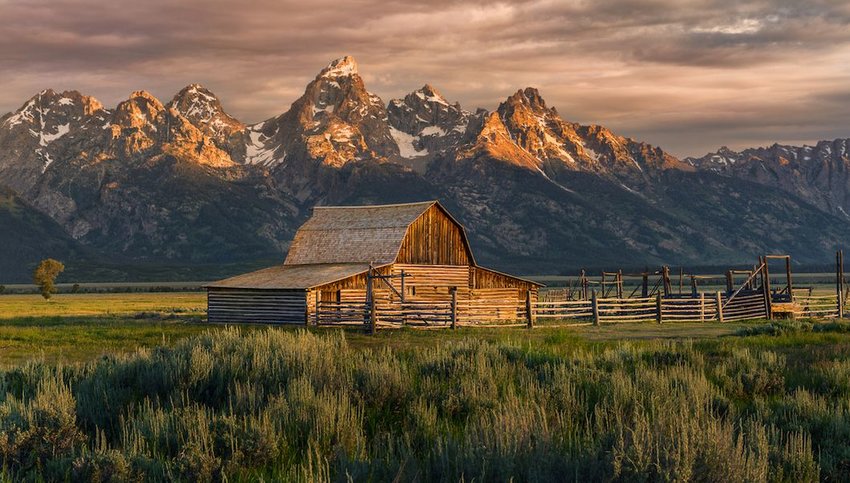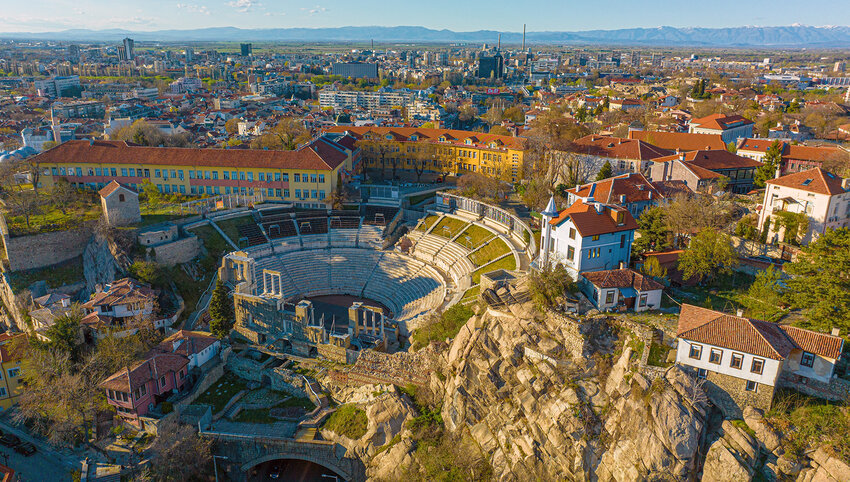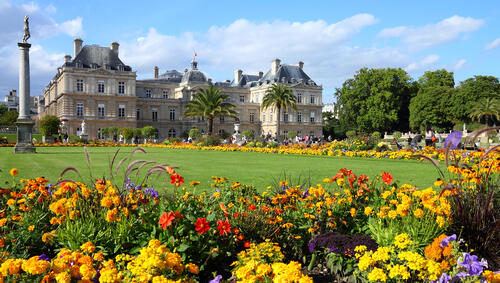The words “For the Benefit and Enjoyment of the People” stretch across the northern entrance of our nation’s first national park, Yellowstone.
According to the Department of Interior, the goal of the National Park Service is, and has always been, to keep our wild places protected and unimpaired for future generations. To that end, more than 400 areas and 84 million acres spanning all 50 states and several unincorporated territories of the United States, protect America’s greatest natural treasures.
So, to help you narrow down which parks should be higher on your list, we ranked our 63 favorites based on their overall accessibility, facilities and accommodations, trails and attractions, crowds, and, of course, overall ‘wow’ factor, which we measured by photo ops and stunning scenery.
Keep in mind, it’s almost impossible to say that one is better than the next — there’s truly something special about each one of our national parks.
63. Kobuk Valley National Park
Alaska
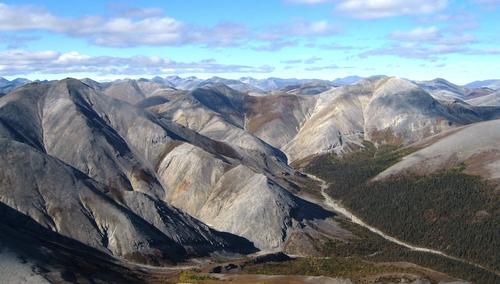
If you’re itching to get off the grid, this park is about as far as you can go. You won’t find carefully-groomed trails and five-star resorts in Kobuk Valley. But what you will find is utter and complete solitude. Kobuk Valley often finds itself on the least-visited parks list due to its remote location in the Arctic Circle. The park can only be accessed by plane or boat in the summer, and snowmobiles in the winter.
However, the few thousand people that venture to Kobuk Valley each year appreciate their very own arctic playground. In Kobuk, you can experience authentic Alaskan wilderness by boating down the Kobuk River or trekking into the backcountry. You can also visit the park’s greatest wonder — the three dune fields that construct the most active arctic sand dunes on the planet. These dunes shape an ethereal desert landscape you wouldn’t expect in the northern reaches of Alaska, and they’re guaranteed to blow your mind.
Standing on top of the Great Kobuk Sand Dune, you’ll be greeted with a hodgepodge of seemingly isolated landscapes – boreal forest in one direction, towering arctic peaks in another and isolated tundra in between.
Visitors to Kobuk Valley aren’t your everyday tourists. This region is generally visited by skilled backcountry explorers and survivalists. The elements can be volatile and unpredictable, and if something were to go wrong, help is days away
62. Gateway Arch National Park
St. Louis, Missouri
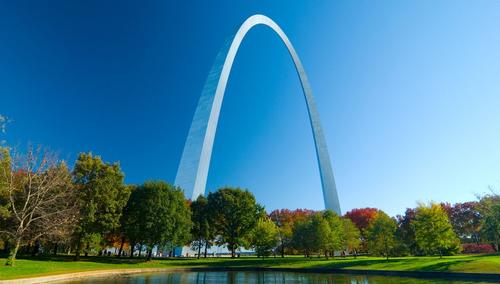
With little more than a name change, Gateway Arch National Park left quite a few folks questioning what it really means to receive national park designation.
Before 2018, Gateway Arch was admirably recognized as the Jefferson National Expansion Memorial. Constructed in 1965, the beloved 63-story, 630-foot stainless steel-clad arch commemorates the historical significance of Thomas Jefferson’s westward expansion, as well as Dred Scott’s famed freedom suit.
Thanks to a hefty renovation, visitors can now take a short stroll from downtown St. Louis to check out exhibits on American Indians, Thomas Jefferson, and Lewis and Clark, spend time at the site of Dred Scott’s first two trials, or explore the newly-renovated American history museum. There’s no denying that the arch is highly respected, honorable, and the perfect destination to celebrate the stars and stripes.
Due to its location at the heart of St. Louis, accommodations are definitely easy to come by. Just keep in mind, this man-made memorial isn’t a sprawling, protected wilderness like some of the other parks on this list. There are just a few interpretive trails to explore and 192 acres (91 federal, 101 non-federal) to appreciate. Needless to say, we definitely think Gateway Arch is worth a visit, though the jury is still out (no pun intended) on its status as a national park.
61. Hot Springs National Park
Arkansas

If you’re looking for the fountain of youth, you might not have to look any further. Known as the “American Spa,” Hot Springs National Park has been the place to go for quality R&R since the early 1800s. Once named “the Valley of Vapors,” this 5,500-acre hot spring oasis has long been considered a place of healing.
Not only is this park home to 26 trails and a stunning, scenic drive, but you get the opportunity to be immersed (and submerged) in a traditional 1800’s European spa experience. You can take a traditional bath at the Buckstaff Bathhouse, take a stroll along a street lined with historical bathhouses or even have a modern-day spa day at Quapaw Baths and Spa. Once you’re done, head up Hot Springs Mountain Drive and check out the Mountain Tower that overlooks the Ouachita Mountains.
Considering its size, the 1.5 million visitors a year can make this park feel a bit cramped at times. But if soaking in a spring is your thing, you won't want to leave this park off of your list of must-see hot springs.
60. Saguaro National Park
Arizona
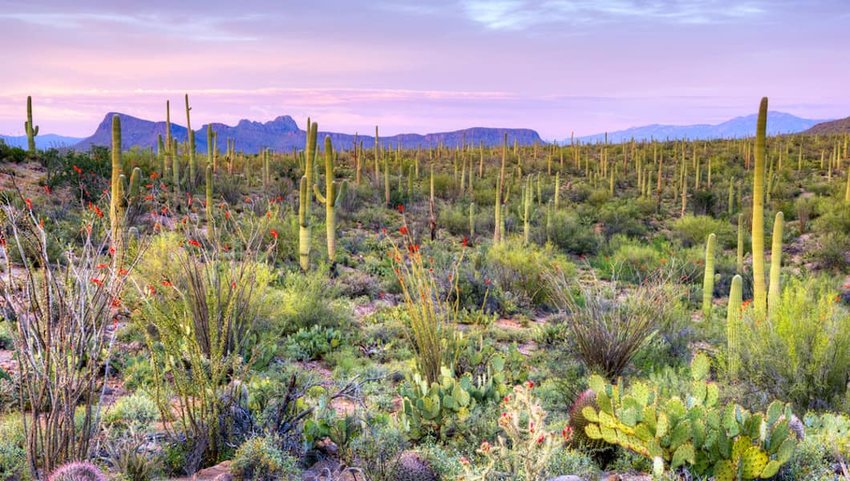
The wild west is alive and well in southern Arizona. Saguaro National Park is best-known for its symbolic saguaro cacti. You know the ones with two-pronged arms you see in all those John Wayne films? That’s the saguaro.
Even though the saguaro is the emblem of the American desert, saguaro cacti are only found in small parts of the country. Fortunately, this 71,000-acre stretch of desert serves as their sanctuary. Saguaro National Park is divided into two sections: The Tucson Mountain District and Rincon Mountain District. Between the two districts, there are more than 165 miles of hiking trails, including part of a beloved National Scenic Trail, a large petroglyph site, a cactus garden, and of course, epic desert sunsets are offered daily, free of charge.
Despite the heat, over 1 million people spent time hiking in the Sonoran Desert in Saguaro National Park last year. There are no accommodations or facilities in the park, so most visitors stay in nearby Tucson. Don't forget to pack extra water!
59. Theodore Roosevelt National Park
North Dakota

You won’t find Teddy at the top of the most-visited national parks list. But since our 26th president was a pioneer of the national parks, the least we can do is appreciate his namesake chunk of land in North Dakota.
Theodore Roosevelt National Park is the only park in North Dakota, and although it’s mostly overlooked, it offers easy, paved footpaths and steep, arduous backpacking trails. There’s even a slice of petrified forest and a painted canyon, just in case you can’t make it out to Arizona. You’ll want to keep your eyes open for wildlife – bison, elk, wild horses, mule deer, and prairie dogs frequently roam the landscape.
Nearby, the town of Medora, whose motto is, “Explore it, Adore it,” sits at the south entrance of the park. So, you can easily restock your supplies, grab a bite to eat and catch a wild west themed musical between excursions.
58. Petrified Forest National Park
Arizona
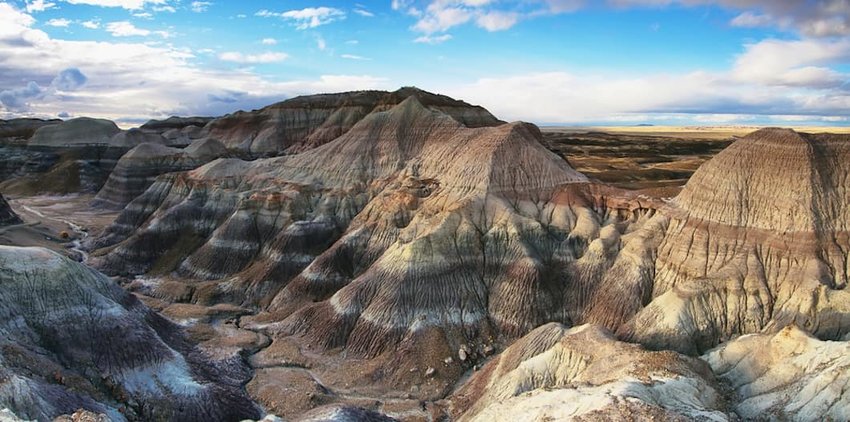
Most folks will drive through Arizona without ever stumbling across this hidden gem. At first glance, you might even wonder where the forest went. Today, stone log fragments litter this part of an otherwise drab section of the Arizona Desert.
Once upon a time, this span of desert was a lush, green, forested oasis with 200-foot conifers and was ruled by dinosaurs. The Petrified Forest inspires adventurers to use their imagination and appreciate the once volcanic mountains and waterways that eventually entombed the remnants of this period.
Of the 50,000 acres of designated wilderness, the brilliantly-colored petrified wood, impressive fossils, and the adjacent Painted Desert incite the most excitement. Unlike most of our national parks, however, this park isn’t open 24/7, which is understandable given the attractions. There are also no campgrounds or lodges, and only a single diner. But just 20 miles down the road in Holbrook or further west in Flagstaff, you’ll find plenty of places to grab a bite to eat.
57. Congaree National Park
South Carolina
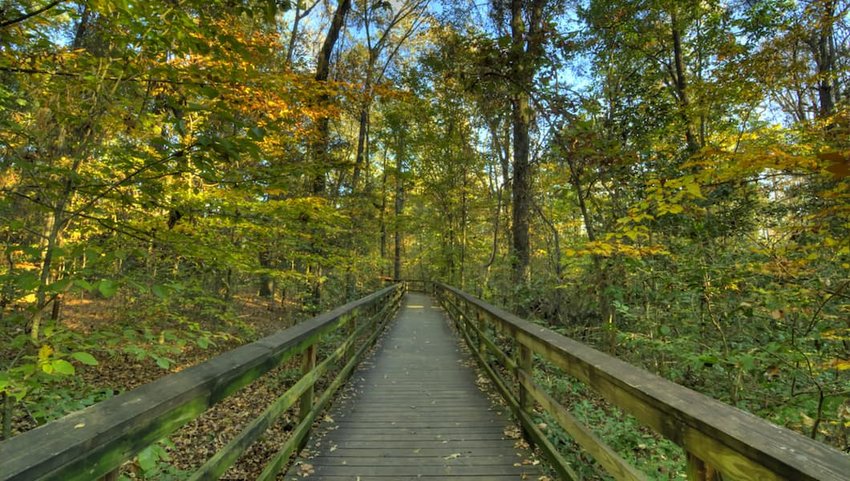
Congaree occasionally gets a bad rap as being nothing more than swampland. After all, it used to be called the Congaree Swamp National Monument. But the National Park Service wants to make it clear that Congaree is a floodplain and natural wonder that preserves the largest area of old growth bottomland hardwood forest in the United States.
The park itself spans just 26,000 acres, and though you won’t find striking high-altitude peaks and rock formations here, Congaree, which receives only 100,000 visitors a year, fosters a truly unique tranquil environment and allows for a peaceful outdoor experience.
Visitors can explore Congaree via 25 miles of hiking trails and a 2.4-mile boardwalk or hop in a canoe and paddle along a marked canoe trail through Cedar Creek. There are just two campgrounds in the park and no lodges or shops to speak of, but Columbia is just a 20-minute drive down the road.
56. Indiana Dunes National Park
Indiana

Our newest national park has entered the scene with a big splash. Indiana Dunes might have recently received national park designation, but as a longtime National Lakeshore, the park has been hard at work protecting and preserving 15 miles of Lake Michigan shoreline, as well as oak savannas, swamps, marshes, prairies, and forest for over 50 years. In fact, they’ve been fighting for national park status for the last century.
The park is only open from 6am to 11pm, so if you have a limited amount of time, you’ll want to plan out which of the 14 trails you want to tackle, especially if you’re hoping to reach the top of Mt. Jackson, Mt. Tom, or Mt. Holden, all of which reach over 150 feet above Lake Michigan. You also don’t want to forget to schedule some time for sunbathing and swimming at one of the park’s beautiful beaches.
There are no lodges, restaurants or general facilities in the park, but Chicago is just an hour away. So, after you fill your day with fun, you can head into the city to grab a bite to eat and rest.
55. Wind Cave National Park
South Dakota
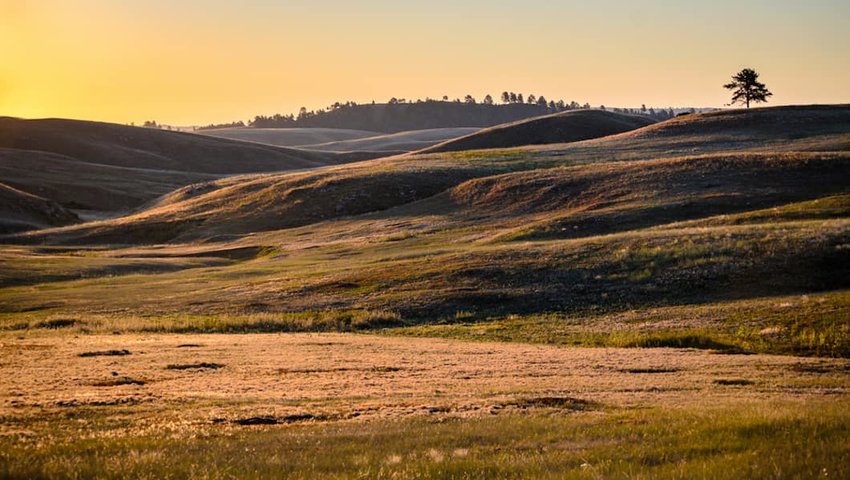
We’d be willing to wager that most people don’t know the third-largest cave in the states is sitting directly beneath the vast grassland of South Dakota.
The massive, intricate cave system has over 140 miles of mapped passages and feels sort of like Yellowstone married Carlsbad Caverns, but on a much smaller scale. Around 30 miles of hiking trails meander through ponderosa pine and open prairie, offering views of Buffalo Gap and the Black Hills. Ranger-guided tours take visitors into the depths of the caves to admire unusual calcite formations that resemble honeycombs. But one of the most favored pastimes for tourists involves simply observing bison, elk and other wildlife roam wild and free along rolling prairies and wooded hillsides.
Wind Cave is both impressive and baffling, but the park itself doesn’t offer much in the way of amenities. There is no lodging or restaurants in the park and only a single first-come-first-serve campground. Just over 600,000 people visit the park each year, a considerable number considering the park’s small size, so if you’re hoping to explore one of America’s oldest national parks, we recommend planning ahead.
54. Gates of the Arctic National Park
Alaska
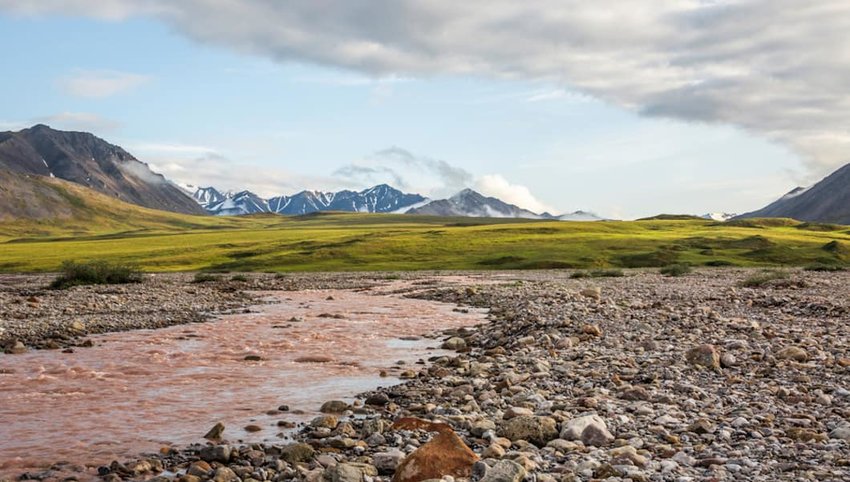
There are very few places left in America that are as untouched as Gates of the Arctic National Park. The park sits entirely above the Arctic Circle and is home to the highest mountain range in America, the Brooks Range. It’s painful to place this park so low on the list, but with only two ways to actually see the park — flying over it on a flightseeing tour or flying in on a bush plane — its accessibility makes it a truly challenging park to visit.
Not to mention, once you actually make it to this untamed wilderness, you’re more or less on your own. There are no maintained or marked trails, no lodges, campgrounds, or even roads within the park. Unpredictable weather, unforgiving terrain, wildlife and transportation costs also contribute to Gates of the Arctic being isolated and nearly uninhabited.
It’ll just be you and remote wilderness. And when we say remote, we mean it. A trip to the park is an adventure that very few will ever experience. At 8.4 million acres, Gates of the Arctic is the second-largest park in the country, but also one of the least visited. With less than 11,000 people making the trek each year, you’re more likely to cross paths with an Arctic wolf or caribou than a human.
To outsiders, traveling to Gates of the Arctic sounds a lot like an episode of Survivor, but for those willing to brave this isolated wilderness, the reward generally outweighs the effort. If you’d rather make the logistics someone else’s problem, you can also consider taking a guided tour. Professionally guided rafting, canoeing, basecamp, packrafting and backpacking trips open up the potential for a truly Alaskan experience.
53. Carlsbad Caverns National Park
New Mexico

Far below the surface of New Mexico (750 feet to be exact) lies 119 unsuspecting caves and caverns. Just 35 miles from Guadalupe National Park, visitors can descend into the Big Room of Carlsbad Caverns, the largest single chamber by volume in North America.
Just two trails (and an elevator) exist for hikers hoping to explore the caves on their own. The Big Room Trail, which leads hikers to the undisputed star of the park, can be accessed via a 1.25-mile trail or a .6-mile shortcut. The relatively flat terrain weaves through a series of curious hanging stalactites and passes through park gems like the Hall of Giants, Bottomless Pit, and Crystal Spring Dome. The park also offers a few ranger-guided cave tours and star walks.There is a cafeteria-style restaurant in the park, but no lodging or developed campsites. In fact, only primitive camping is permitted in Carlsbad Caverns National Park.
Although we feel the history and beauty of these incredible limestone caves make the park worthwhile to visit, in comparison to other national parks, there are far fewer trails and attractions, accommodations and amenities. The park’s modest acreage is also heavily visited, so we recommend avoiding summer months if you want to avoid the crowds.
52. American Samoa National Park
American Territory of Samoa
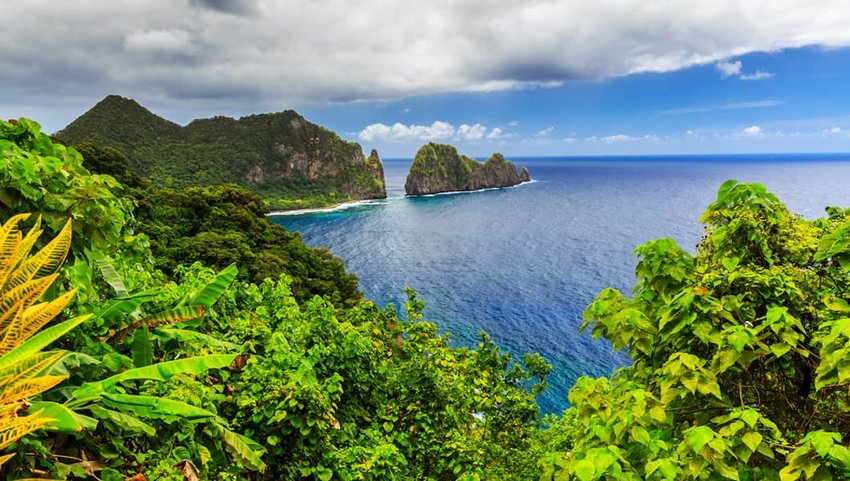
We’re going to let you in on a little secret. About 2,600 miles southwest of Hawaii, in the middle of the Pacific Ocean, lies a 13,500-acre leased plot of land (and ocean) that sits, relatively undiscovered by tourists. Yep, you read that right, the U.S. doesn’t exactly own the parkland. Despite receiving national park designation in 1988, it wasn’t until 1993 that Samoan chiefs agreed to allow the National Park Service to manage the land.
As the only national park situated south of the equator, American Samoa isn’t your typical national park destination. There are only 13 hiking trails, no camping permitted and the infrastructure of the islands doesn’t support tourist activities, like diving and snorkeling. In fact, the island of Tutuila is the only portion of the park that is accessible by car.
That being said, American Samoa isn’t completely devoid of wow-factor. According to National Geographic, the park protects five distinct rainforest communities, pristine sandy beaches, coral-rich shorelines, and incredible volcanic ridges. More than anything, a trip to the park is about being immersed in authentic Samoan culture.
51. Guadalupe Mountains National Park
Texas
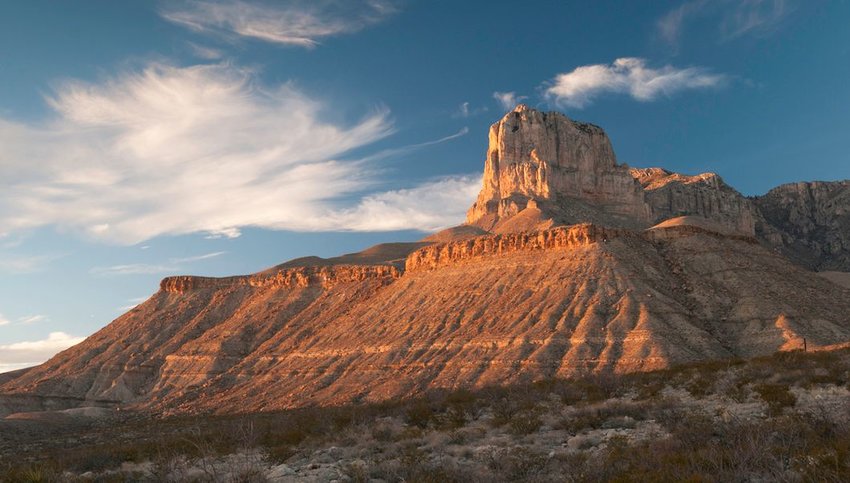
From the flat, arid desert floor, the Guadalupe Mountains can be seen jutting dramatically to the top of Guadalupe Peak, the highest peak in the Lone Star State. This park isn’t home to just one, but four of the highest peaks in Texas. Known by locals as a place of extremes, Guadalupe Mountains is imposing and environmentally diverse.
Over 80 miles of trail zigzag through the mountains and desert below. Major trails, like Guadalupe Peak and El Capitan, are steep and strenuous but offer sweeping views of the surrounding landscape. If you’re not up for the climb, you can also take a short walk to Manzanita Spring or take in views of West Dog Canyon from the Marcus Overlook. Although there aren’t any lodges or hotels in the park, there are two first-come-first-serve campgrounds open year-round and 10 designated backcountry campsites.
Guadalupe Mountains National Park isn’t necessarily as scenic as some of the alpine or subtropical parks on the list, but you don’t have to worry about crowds, and these high-altitude peaks can be the perfect reprieve from the Texas heat.
50. Mammoth Caves National Park
Kentucky
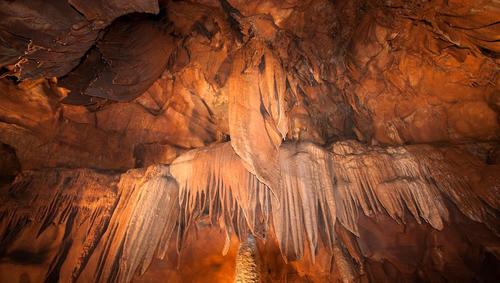
The Bluegrass state might be best-known for the Kentucky Derby, but it also happens to house a 400+ mile long underground cave — the longest in the world. Meet Mammoth Cave National Park, one of the most underrated treasures in the states.
Various ranger-led cave tours are offered seasonally to highlight the natural history and complexity of different portions of the cave. Some tours, like the Frozen Niagara Tour, are easy footpaths and highly accessible, while others, like the Grand Avenue Tour, travel through narrow canyons and steep underground hills.
But you don’t have to be cooped up in a cave the whole time. There are plenty of other activities and attractions to explore. This 53,000-acre park offers 84 miles of trail that can be used for hiking, biking, or horseback riding. Also, 30 miles of the Green and Nolin Rivers offers ample opportunity for kayaking, canoeing, fishing, boating, and swimming. As far as services and accommodations go, there are three developed campgrounds and a lodge inside of the park, but there are also plenty of places to eat and sleep nearby.
49. Dry Tortugas National Park
Florida

Florida has a beach for just about every type of traveler, and for the national-park-loving beachcomber there’s Dry Tortugas. One of America’s least-visited national parks, Dry Tortugas consists of a chain of seven islets, including historic Fort Jefferson, that sits 68 miles off the coast of Key West.
While the park is over 64,000 acres, only one percent contains dry land. This means that although Dry Tortugas isn’t all that dry, it’s the perfect park for snorkeling in crystalline waters, reef diving to shipwrecks, and observing aquatic life like nurse sharks, parrot fish, and moray eels. In fact, the park sits at the end of the Florida Reef system, so it isn't as damaged as nearby reefs in the Florida Keys.
Often referred to as “The Guardian of the Gulf,” Fort Jefferson remains a major highlight for visitors to Dry Tortugas. The fort, which was built to protect the strategic deep-water anchorages of North America, is one of the most advanced military building projects of its time.
The easiest ways to get to the islands are by seaplane or ferry unless you can dish out the dough for a private yacht. There is only one primitive campground, but unlike other parks on this list, most of the park can be explored in a day. If you want to visit this gorgeous group of islets, you’ll need to act fast — according to the National Center for Preservation Technology and Training, rising sea levels and warmer air temperatures are taking a toll on the islets, and they’re in constant threat of inundation.
48. Voyageurs National Park
Minnesota
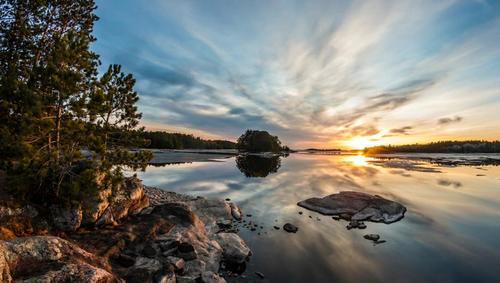
Stretching from the U.S. to Canada, Voyageurs National Park is best-described as an intricate labyrinth of waterways and lakes. In fact, four large lakes — Rainy, Kabetogama, Namakan, and Sany Point — make up forty percent of the park’s 225,000 acres. These larger lakes, in addition to 26 inland lakes, form a network of liquid transportation corridors, accessing over 655 miles of undeveloped shoreline, 200 campsites, a handful of hiking trails and more than 500 individual islands.
It goes without saying, but the most popular way to experience the park is by boat. Guided boat tours will teach you the history of the islands and waterways, as well as take you to the historic Kettle Falls Hotel. However, you can also BYOB – bring your own boat – or rent one to explore the park at your own pace.
Most of the park’s accommodations and attractions are only accessible by boat, so if you’re not up for paddling to your campsite, you can check into a hotel and grab a bite to eat in nearby Fort Francis, Kabetogama or Island View.
47. Pinnacles National Park
California
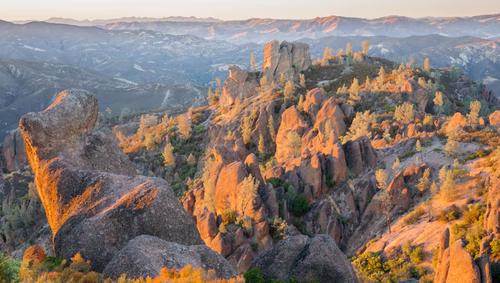
The newest addition to California’s national parks, Pinnacles, may be one of the least-known parks in the state, but that doesn’t mean it doesn’t have plenty to offer. Just one look at the landscape and you'll instantly see how this park got its name.
Incredible volcanic rock formations blanket the landscape and dissect the park in half. Connected only by footpaths, both the east and west portions of the park offer miles of hiking trails and striking geological features.
The park’s only campground is in the eastern part of the park, while popular hiking trails like the High Peaks trail and Balconies Loop are located to the west. While most visitors come to the park to marvel at the craggy spires, tackle rock-climbing routes, and hike through talus caves, some would rather just take advantage of the dark night sky. Aside from a single campground and store, Pinnacles doesn’t offer much in the way of accommodations. However, there are local communities that provide services.
46. Black Canyon of the Gunnison National Park
Colorado
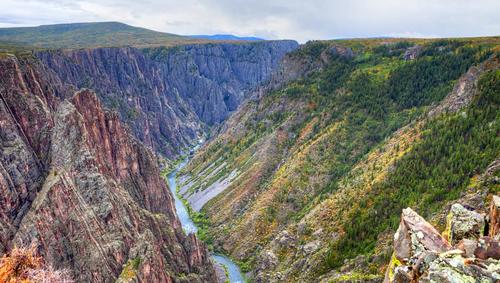
Welcome to the self-proclaimed Grand Canyon of Colorado.
Despite being just 14 miles from Montrose and 63 miles from Gunnison, Black Canyon of the Gunnison receives fairly modest visitation. An ideal spot for scenic drives, rock climbing, kayaking, and hiking, the park houses some of the oldest exposed rock and craggiest spires in North America.
So why don’t more people visit? Well, the striking, vertical canyon walls that make Black Canyon of the Gunnison so impressive, also make for less available hiking trails and amenities. The park only offers a handful of short trails on the outer rim and only strenuous, unmarked trails on the inner canyon, which tends to deter the everyday traveler.
Still, we think the South Rim Drive, which offers 12 stunning vistas of the canyon below, is reason enough to venture to Black Canyon of the Gunnison. Also, as an International Dark Sky Park, some would argue that the real magic happens after dark.
There are three large campsites located in the park, one of which offers impressive views of the highest cliff in Colorado, Painted Wall, which is 1,000 feet taller than the Empire State Building. However, if you’re looking to stay in a hotel or need to refill your snack supply, you’ll have to trek to a nearby city.
45. Great Basin National Park
Nevada

People will probably think you’re crazy when you tell them that you’re heading to eastern Nevada to explore subalpine lakes, forests, and 13,000-foot peaks. But in the midst of the desolate desert lies Great Basin National Park, home to the only active glacier in Nevada and the world’s oldest living trees, the ancient Bristlecone pine.
Great Basin is incredibly diverse. In the north, a scenic road hugs the mountainside as it ascends 13,000-foot Wheeler Peak, while at lower elevations, the intricately-carved Lehman Caves take hikers through a subterranean world of stalactites and other rare cave formations.
And if you ask the locals, half the park is after dark. Recently designated an International Dark Sky Park, Great Basin will allow you to gaze for hours at thousands of stars, meteors, man-made satellites, and the Milky Way.
Although summer months can get moderately busy, the park doesn’t get visited nearly as often as nearby Utah national parks. The only real drawback to Great Basin is a lack of lodging and facilities. There are five developed campgrounds and some primitive camping along Snake Creek road, but aside from that, you’re on your own. Not to mention, Great Basin desert climate can make the 60 miles of developed trails more challenging during warm summer months.
44. Biscayne National Park
Northern Florida Keys
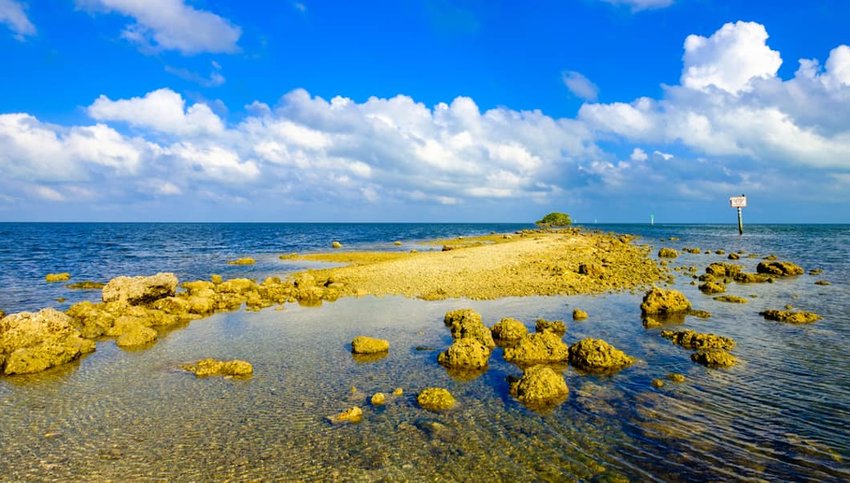
It’s hard to believe that a stone's-throw from downtown Miami is the world’s third-largest coral reef. According to the NPS, Biscayne protects extraordinary aquamarine waters, emerald islands, and “fish-bejeweled” coral reefs.
While there isn’t much in the way of hiking trails, Biscayne offers an entirely different type of adventure, including several paddling trails. In fact, unbeknownst to most visitors, 95% of the park’s 172,000+ acres are submerged beneath the aquamarine sea.
Biscayne offers epic eco-adventures like snorkeling and scuba diving to shipwrecks and colorful coral reefs along the Maritime Heritage Trail, sunset paddling trails that travel through Jones Lagoon or across Biscayne Bay, and wonderfully diverse aquatic wildlife, like sharks, sea turtles, and jellyfish.
You might be wondering why Biscayne is a little further down the list. Well, despite the reefs being some of the most accessible in the world, getting to Biscayne takes a little more effort than your average national park. From downtown Miami, it can take over an hour to reach the Dante Fascell Visitor Center. From there, you’ll need to hop aboard a boat or take a guided tour to get the most out of your adventure. Also, despite its proximity to major cities, there are no hotels or amenities inside of the park and the two campgrounds available are only accessible by boat. The good news is, Biscayne’s unique landscape makes for less crowds, and it won’t be hard to find tranquility out at sea.
43. Channel Islands National Park
California

Yosemite generally steals the spotlight as California’s most adored park, but just 25 miles from the southern California shoreline, eight relatively-undiscovered, serene islands are waiting to be explored.
Eight islands form the Channel Islands, five of which form the national park – Anacapa, Santa Cruz, Santa Rosa, San Miguel, and Santa Barbara. Each island offers its own unique ecosystem, amenities and activities.
Santa Cruz Island is the most-visited of the islands in the chain. It's home to one of the largest known sea caves in the world, “Painted Cave”, and Diablo Peak, the highest peak on the Channel Islands. Here, hikers appreciate rugged, mountainous footpaths to deep valleys and canyons, kayaking pristine marine waters, and snorkeling or swimming through kelp forests and sea caves. Every island offers a healthy variety of unique outdoor activities and plenty of epic photo ops. If you’re not quite sure where to start or don’t want to go alone, you can tag along on guided kayaking, snorkeling, whale watching, boating, or interpretive hiking tours.
There is no on-island transportation, so expect to use your two feet to get you to where you want to go. Also, each island only has one established campground and backcountry camping is limited, so if you’re looking for comfy lodging or facilities, you’ll have to head to the mainland. Southern California’s mild weather makes the Channel Islands’ vibrant sunsets and dramatic panoramic views accessible all year long. Just keep in mind, quite a bit of planning and preparation is needed to enjoy an extended stay.
42. Badlands National Park
South Dakota
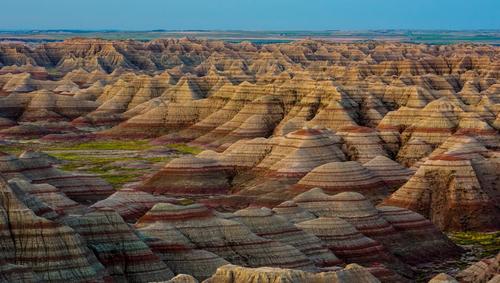
We see you South Dakota, and your 244,000 acres of pristine, protected wilderness. Although Badlands isn’t entirely unknown, it’s often referred to as an under-appreciated park in comparison to heavy hitters like Yosemite or Yellowstone.
Yet, each year, over 1 million visitors travel along the Badlands Loop Road to experience magnificent craggy buttes, pinnacles and spires that seem to surprise the surrounding prairie grasslands. As far as accommodations go, Badlands is home to two year-round, first-come, first-served campgrounds. Or, if you don’t want to rough it, the Cedar Pass Lodge, a seasonal chalet, is also within park limits.
Although this Mars-like landscape has several accessible trails and overlooks — like the Pinnacles Overlook, Cliff Shelf Nature Trail, and Fossil Exhibit Trail — you won’t find nearly as many designated trails here as you will find in other, comparable national parks. Fortunately, their open backcountry policy permits hikers to explore off-trail. No permit? No problem. You can venture literally anywhere in the park, as long as you’re 1.5 miles from a road or trail.
Still, although Badlands has a lot to offer, we have to recognize that mixed-grass prairie and exploring fossil beds isn’t necessarily for everyone. In terms of spectacular scenery, Badlands just doesn’t deliver the same oomph for effort as some of the other parks.
41. Hawaii Volcanoes National Park
Hawaii
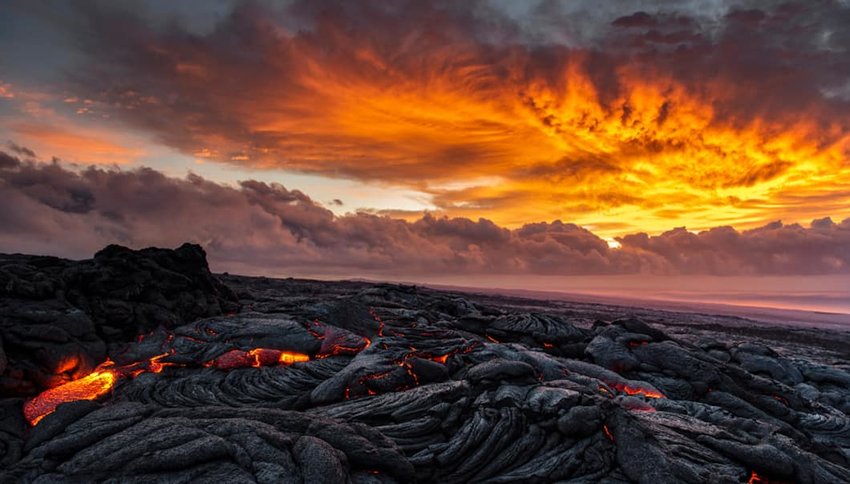
Hawaii isn’t just about beautiful beaches — although they’re certainly plenty of those to choose from. Hawaii Volcanoes National Park, which houses two of the most active volcanoes in Hawaii — Kilauea and Mauna Loa — is one of the state’s most treasured attractions.
While Kilauea is undoubtedly a park highlight, Mauna Loa, the larger of the two volcanoes, towers 13,677 feet above the sea. According to National Geographic, measured from its base at 18,000 feet below sea level, Mauna Loa is taller than Mount Everest.
And while it’s exciting to see lava flow on a NatGeo documentary, Hawaii Volcanoes takes things to the next level by offering both self-guided lava viewing and guided lava viewing tours. Viewing conditions can change rapidly, so you’ll have to check in with the park if you plan to go without a guide.
If you can’t quite catch the lava flow, there are still over 100 miles of hiking trails available, several of which pass through old lava tubes, lush rainforest and over old lava flows. Closed-toe shoes are sort of a given, but please hike responsibly and remember you’re walking on an active volcano.
The Volcano House, the only lodge in the park, offers 33 guest rooms, a dining room, snack bar, and shop. There are also rustic camper cabins and two campgrounds available to visitors. But even if you don’t stay within the park, you’re in Hawaii, so spectacular amenities aren’t too far.
40. Mesa Verde National Park
Colorado
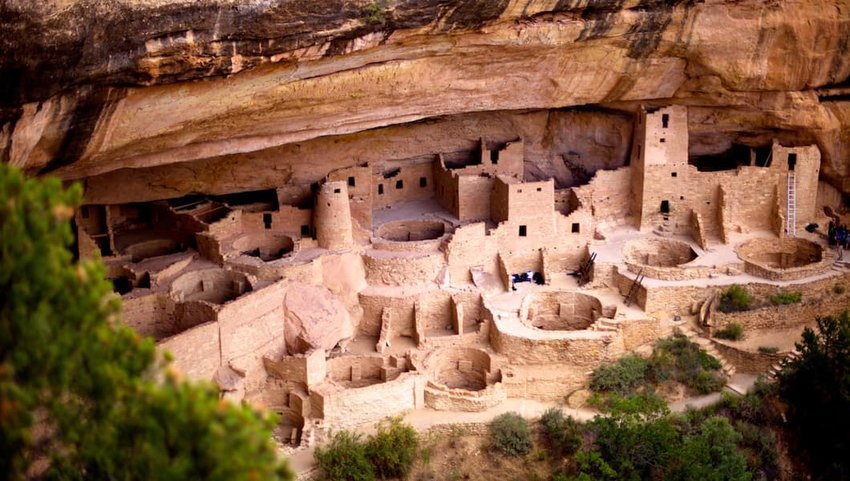
Just 35 miles west of Durango, Colorado, Mesa Verde National Park protects and preserves nearly 5,000 archaeological sites and 600 spectacular cliff dwellings dating back to A.D. 600. In fact, this hidden gem is considered one of the richest archeological zones in America.
Drop by the Chapin Mesa Archeological Museum for some fast facts on Ancestral Pueblo culture before heading out on the 6-mile Mesa Top Loop Road. Or, if you’re feeling ambitious, jump on the 116-mile Trail of Ancients, America’s only Scenic Byway dedicated to archaeology.
There are some hiking trails to choose from, cliff dwelling tours and even cross-country skiing is a popular hobby during winter months. Just an hour away, in Cortez, you’ll find ample accommodations, dining, and shopping. Or, you can stay at the campground or lodge inside the park. Keep in mind that over a half million visitors tour the 52,485-acre park each year, so you can expect some crowding, particularly in summer months.
39. Everglades National Park
Florida
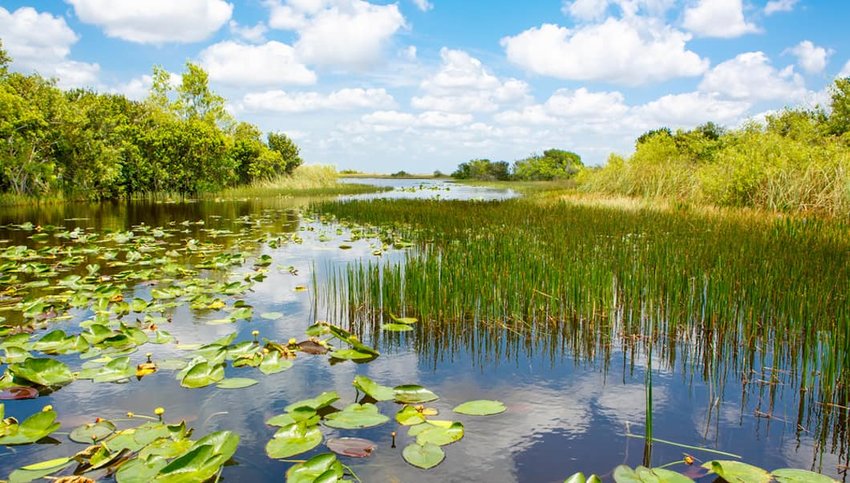
President Truman said it best when described the Everglades: “Here are no lofty peaks seeking the sky, no mighty glaciers or rushing streams…Here is land, tranquil in its quiet beauty…”
Visitors don’t seek out the Everglades for craggy peaks and alpine meadows, but they do travel to the park to immerse themselves in the legendary River of Grass, admire 1.5 million acres of tropical and subtropical habitat and to encounter several endangered species. While trekking through the Everglades, you’ll want to keep your eyes on the footpath, it’s not unusual to witness alligators and crocodiles basking in the sun along trails and roadways.
Two drive-in campsites accommodate both tents and RV’s, and several backcountry beach sites and elevated sleeping platforms can be found throughout the park. However, there are no lodges or restaurants, and just a few snack items and beverages can be purchased at the Visitor Center. Airboat Tours offers a unique way to experience the park, but if you’re eager to put on your hiking boots, you can also take a walk along popular self-guided trails like the Gumbo Limbo Trail, Anhinga Trail, or Mahogany Hammock. The crowd factor can a bit overwhelming in Everglades, over a million people visit the park each year, so you’ll want to plan your trip well in advance.
38. Capitol Reef National Park
Utah

With the sheer number of beautiful parks in southern Utah, it might feel like Capitol Reef is just another quintessential otherworldly landscape packed with wild geological formations. Although that’s not entirely inaccurate, compared to the visitation numbers of other Utah parks, Capitol Reef can feel a lot like a hidden treasure.
Unusual, elaborate cliffs and canyons shape the landscape of Capitol Reef. The Waterpocket Fold, the second largest monocline in North America, extends for nearly 100 miles and appears as a bizarre “wrinkle” in the Earth’s crust. Red-rock canyons, ridges, buttes, and sandstone monoliths create a 387-mile outdoor retreat for hikers, campers, photographers, and rock climbers. And, this wouldn’t be a Utah park if it didn’t contain an incredible sandstone arch; The Hickman Bridge stretches for 133-feet and offers canyon views in every direction.
Although there are 71 developed and 11 primitive campsites, there are no lodges or restaurants in the park. So, be sure to pack your s'mores before you hit the high desert. To add to the adventure, a trip to Capitol Reef requires a 3-hour road trip from most major cities, including Grand Junction and Salt Lake City.
37. Virgin Islands National Park
Virgin Islands

Resembling an idyllic honeymoon destination, Virgin Islands National Park is where beachcombers go to soak up the sun on white sandy beaches, discover tropical forests and swim in turquoise, crystalline Caribbean waters.
The national park covers most of the island of St. John, and although there are plenty of beach-dweller outdoor activities like boating, kayaking, sailing, snorkeling, and hiking, the island also offers a fascinating history that dates back to 840 BC. The island of St. John isn’t typically overcrowded, especially in comparison to nearby tropical hotspots, but reaching the island can be a bit of an ordeal. There are no airports on the island, so you’ll need to fly, drive and take a ferry to reach the park. Once you’re there, you can drive or take a public bus to get to where you want to go.
Unfortunately, in 2017, Hurricanes Irma and Maria devastated two popular resorts, Cinnamon Bay and Caneel Bay, inside of the park. However, there are other exclusive beach resorts, villas, and cottages nearby.
36. Haleakalā National Park
Maui, Hawaii
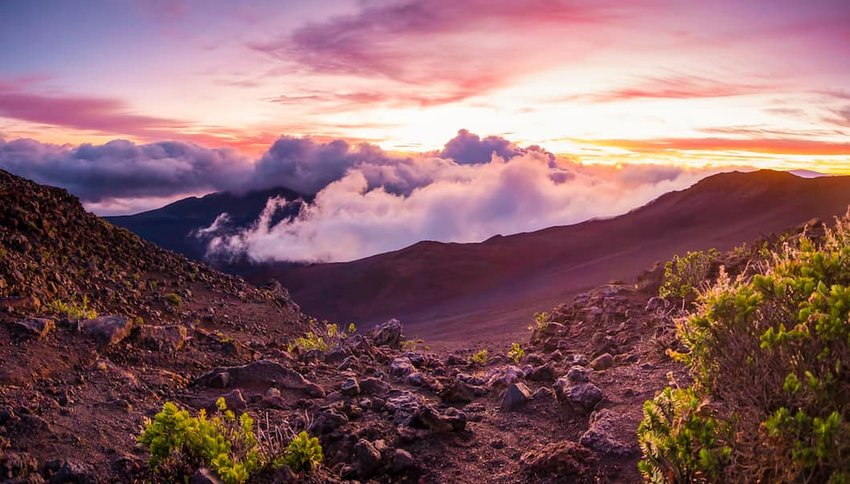
Ever wonder what it would be like to observe our place in the Milky Way Galaxy? Watch the sunrise from high above the clouds? Or maybe you’d prefer to hike the rim of a dormant volcano or trek to a swimming hole tucked within a lush, tropical jungle?
Haleakalā National Park offers all of these things and more. A giant 2,720-foot depression, referred to as the Haleakalā Crater, serves as the park’s major attraction. Popular trails, like Sliding Sands, will take you into the depths of the volcano’s massive cavity.
Uncharacteristic of Hawaii’s tropical climate, touching the top of the 10,023-foot Haleakalā delivers a comparable freeze to what you’d experience on an alpine peak in Colorado. Traversing the dormant volcano, you will travel through several climate and vegetation zones – a relative weather whiplash.
There are two first-come-first-serve primitive campsites in the backcountry and three historic wilderness cabins to reserve. Haleakalā is pretty accessible, once you reach Maui. However, you can expect to spend a couple of hours in the car from the nearest major city, Kahului, before you reach the summit.
35. Joshua Tree National Park
California

For years, novice and expert climbers have ventured to Joshua Tree to climb giant, sculpted slabs of rock, while hikers explore the vast desert terrain. But in recent years, Southern California's beloved desert oasis has been gaining a lot of attention. In 2017 alone, visitation climbed to over 2.5 million, a record high for the region. So, what is it that’s drawing more people to the desert?
Well, for starters, Joshua Tree is the perfect destination to escape the light-polluted skies of Southern California for some much-needed stargazing. The park’s namesake tree, which resembles something you might find in a Dr. Seuss book, is also an admired inhabitant of the park. But aside from checking out the quirky trees and catching the occasional meteor shower, Joshua Tree is the place to be if you’re a wildflower fanatic. During a mid-April wildflower super bloom, this otherwise khaki-colored desert landscape is completely adorned in an array of brilliant colors.
Still, it’s worth mentioning that you have to truly love desert terrain to appreciate Joshua Tree – it’s a hot, relatively barren flatland, that is littered with giant rock formations that seem to jut from the Earth’s core.
There are nine campgrounds within the park, only half of which can be reserved. However, you can backcountry camp anywhere in the park, as long as you’re not in day-use areas, 500 ft from trails or water, and more than a mile from roads. Just don’t expect any lodges or fine-dining in this part of the Mojave Desert.
34. Big Bend National Park
Texas

Big Bend National Park, an 800,000-acre mountain oasis in southwest Texas, is far too big to appreciate in a single trip. Fortunately, there are 42 backcountry campsites, four developed campgrounds, and the Chisos Mountain Lodge provides a variety of rooms, cottages, and a dining area, so you shouldn’t have a hard time extending your stay.
Although the park doesn’t lack awe-inspiring scenery, sweltering Texas heat typically deters the park’s 440,000 annual visitors from visiting during peak summer months. Instead, hikers and campers prefer the mild temperatures of spring and fall or head to higher elevations in the Chisos Mountains, where the temps are 20+ degrees cooler.
Over 150 miles of hiking trails are available to explore the peaks of the Chisos Mountains or Santa Elena Canyon, but you can also take a short stroll and soak in therapeutic hot springs after a long day of sightseeing. Not up for hiking? No problem – take a scenic drive along 100 miles of paved road that stretches through the park, spend time at the Fossil Discovery Exhibit, or merely sit out under the stars and marvel at the beauty of a clear night sky.
It can take over 3 hours to drive to Big Bend if you are flying into El Paso or Midland, so make sure you plan accordingly and have a rental car ready to go when you land.
33. Lake Clark National Park and Preserve
Alaska
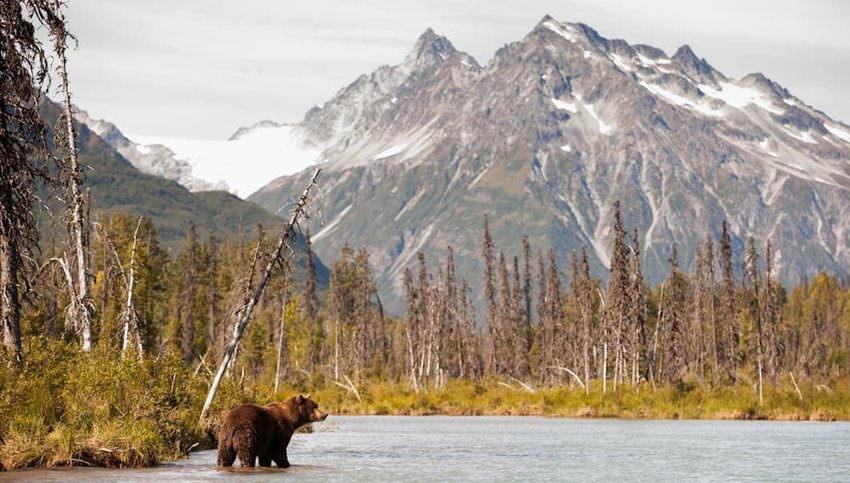
Nestled along the shores of Cook Inlet, across the Chigmit Mountains, lies a lesser-known national park to add to your next Alaskan adventure. At over four million acres, Lake Clark National Park is twice the size of Yellowstone National Park. But unlike Yellowstone, four million folks don’t visit Lake Clark each year, so you can expect to have this epic Alaskan landscape more or less to yourself. Why?
Well, for one, traveling to Lake Clark takes serious commitment. This vast, isolated wilderness can only be reached by hopping aboard a float plane or boat from the remote community of Port Alsworth. This tiny town offers the only real facilities and services in the area, including a handful of hotels and tour companies.
Still, when you stack Lake Clark against other remote Alaskan parks, it seems to strike the perfect balance between access and peaceful, secluded wilderness. There are no roads or cars in the park to contend with, and with only 22,000 people visiting each year, you won’t have to worry about busy trails or crowds. There are also some accommodations, and even a few outfitters and adventure companies that are willing to rent you equipment or take you fishing, backpacking, kayaking, and bear viewing.
32. Cuyahoga Valley National Park
Ohio

Just outside of the urban hustle and bustle of Cleveland and Akron, Cuyahoga Valley offers adventure-seekers the ability to easily escape to nature. Cascading waterfalls, million-year-old rock formations, dense forest, and rolling hills decorate the park’s 33,000 acres. Within park boundaries, visitors can appreciate charming community events and activities like railroad tours on the Cuyahoga Valley Scenic Railroad, art exhibits, theater productions and even the occasional live orchestra.
The Cuyahoga River, which winds through the park for nearly 100 miles, offers tons of potential for canoeing and kayaking. More than 125 miles of hiking trails, including the well-traveled Ohio and Erie Canal Towpath Trail and the Virginia Kendall Ledges, navigate giant limestone boulders, mossy cliffs and pristine woodland. Nearby, the thundering waters of Brandywine Falls earn Cuyahoga Valley the reputation as being one of America’s finest parks for chasing waterfalls.
In other words, Cuyahoga doesn't lack spectacular scenery. Accommodations, however, can be a little harder to come by – only two small homes within the park can be reserved and five primitive campsites are available along the Towpath Trail.. Fortunately, there are a few state parks and major cities nearby to put you up for the night. Cuyahoga Valley isn’t a secret to Cleveland locals — the park receives over 2.2 million visitors a year. So, if you’re traveling during summer months, you can expect to share the trail.
31. Isle Royale National Park
Michigan
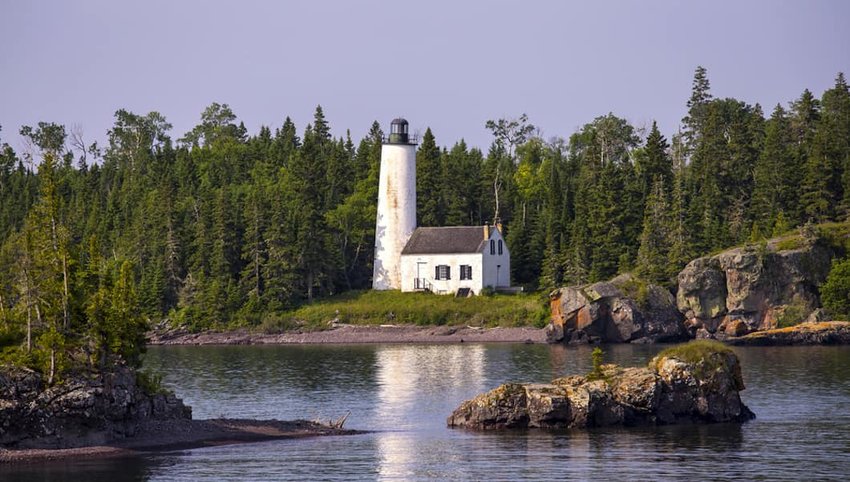
You don’t necessarily have to fly to Alaska to seek utter solitude. There are very few places left in the lower 48 that are as rugged and remote as Isle Royale, Michigan. Nearly 20 mammals, including wolves and moose, roam within the boundaries of this 132,000-acre island wilderness, frequently making an appearance on the popular hiking trails. The few people that venture to the island each year arrive by ferry, boat or seaplane and set up camp at one of 36 campsites.
The island offers over 165-miles of trail, scuba diving to shipwrecks in Lake Superior, kayaking or canoeing along an intricate network of waterways, and if the stars align, you might even catch a glimpse of the elusive northern lights.
Isle Royale is only open from April 16th to October 31st. Due to the unpredictable waters and weather of Lake Superior, visitors are expected to plan and be prepared for unanticipated shifts in the environment. Also, due to the remote nature of the park, some services and resources, including potable water, may not be available on the island.
30. New River Gorge
West Virginia

Welcome to America’s 63rd national park — the New River Gorge National Park and Preserve.
Renowned for its colossal rapids and striking sandstone cliffs, the New River Gorge National Park and Preserve protects 53 miles of the free-flowing New River and more than 70,000 acres of public land in the beloved Appalachian Mountains.
Thrill-seekers looking to test their white-water skills on the New River can navigate a series of imposing class III to class V rapids and powerful currents in the lower (northern) gorge. Meanwhile, on the upper (southern) part of the river, visitors can float through friendlier class I to III rapids, allowing for more time sightseeing and less time fighting to stay in the raft.
If you don’t have experience on the river, you don’t have to float solo – commercial outfitters conduct trips down the river from April through October.
Whitewater not for you? That’s ok! Outdoor activities are abundant in the park. Visitors to New River Gorge can explore more than 50 miles of hiking trails, tackle one of the park’s 1,400 established rock climbs, or simply soak in views of this impressive sandstone gorge along one of the park’s many scenic drives.
Camping in the park is primitive, but free. All nine camping areas are managed on a first-come, first-served basis and most provide access to the river for fishing and boating. For those that don’t want to rough it, several nearby towns offer a variety of lodging options, including motels, cabins, and bed and breakfasts.
29. Great Sand Dunes National Park and Preserve
Colorado
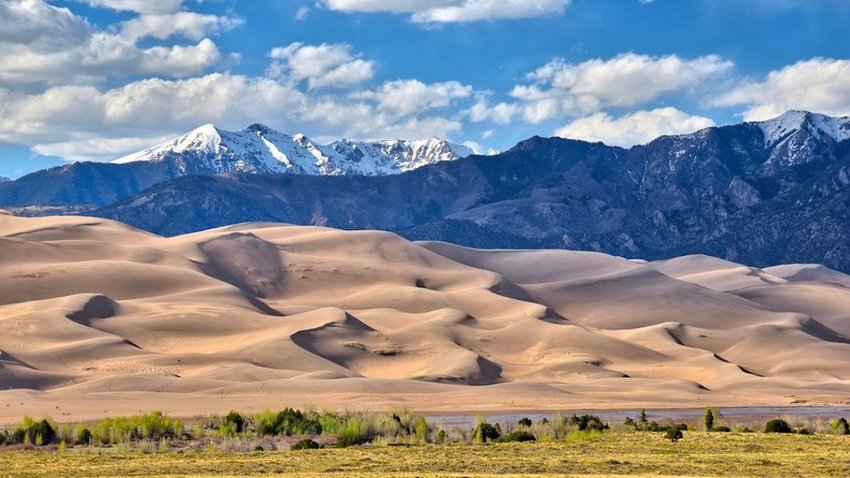
Where else in the world can you hike craggy alpine peaks and the tallest sand dunes in North America all in the same day? Great Sand Dunes offers some of the most diverse hiking terrain on this list. Visitors can trek to alpine lakes and peaks, like the 13,29-foot Mount Herard, or explore desert dunes, like the 750-foot Star Dune or the aptly-named 699-foot High Dune.
Even if each member of the family has a different hobby, chances are Great Sand Dunes checks the box. Off-roading, sandboarding, fishing, stargazing, hiking and horseback riding are all available in the park. Great Sand Dunes doesn’t really experience a lot of overcrowding, partly due to the surface temperature of the dunes. Even on a modest 80-degree day, the dunes can reach 150 degrees, making them impossible to appreciate during the day.
There is also only a single campground and a seasonal restaurant, so not much in the way of accommodations. But if you bring your own food and camp out under the stars, there’s plenty to appreciate in Great Sand Dunes National Park.
28. White Sands National Park
New Mexico
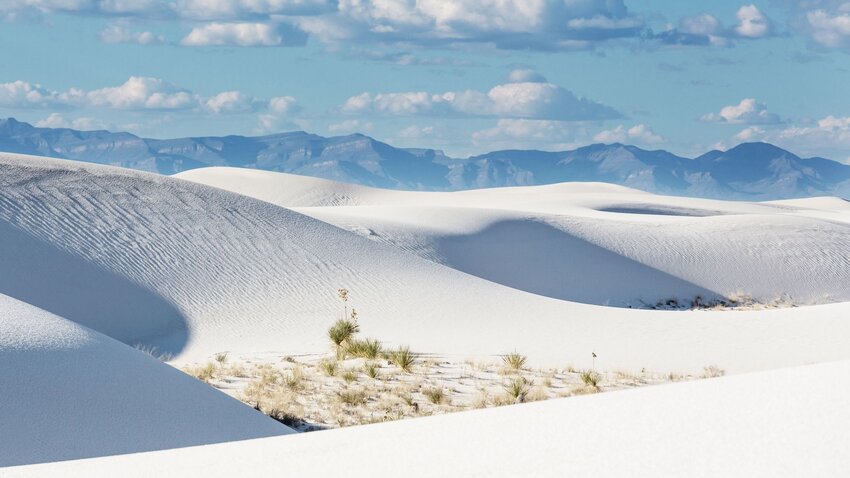
Have you ever wondered what it would be like to sled down the world’s largest gypsum dunefield? You can find out by visiting New Mexico’s most popular park – White Sands National Park.
New Mexico’s dazzling white dunes have been protected as a national monument for nearly a century, but the new national park designation further emphasizes the significance of the area’s incredible natural and cultural resources.
Just as its name implies, the most iconic feature in White Sands is the park’s sprawling white dunes. But these aren’t your average sand dunes; The dunes of White Sands National Park are mostly made up of gypsum sand – a soluble, transparent substance that behaves more like snow than sand.
Unlike traditional sand, gypsum doesn’t absorb heat from the sun. That means that you can confidently kick off your shoes on the hottest day of the year without worrying about scorching your toes.
While the dunes get most of the hype from park visitors, White Sands also preserves the largest collection of ice age fossilized human footprints on Earth. Visitors are encouraged to stop by the visitor center to learn more about the area’s fascinating history.
White Sands National Park is open year-round but closes at 9 p.m., on most days. There are no campgrounds in the park and few backcountry campsites. The closest accommodations to the park are in Alamogordo and Las Cruces, New Mexico and El Paso, Texas. Camping is also available nearby in Oliver Lee Memorial State Park.
27. Glacier Bay National Park
Alaska
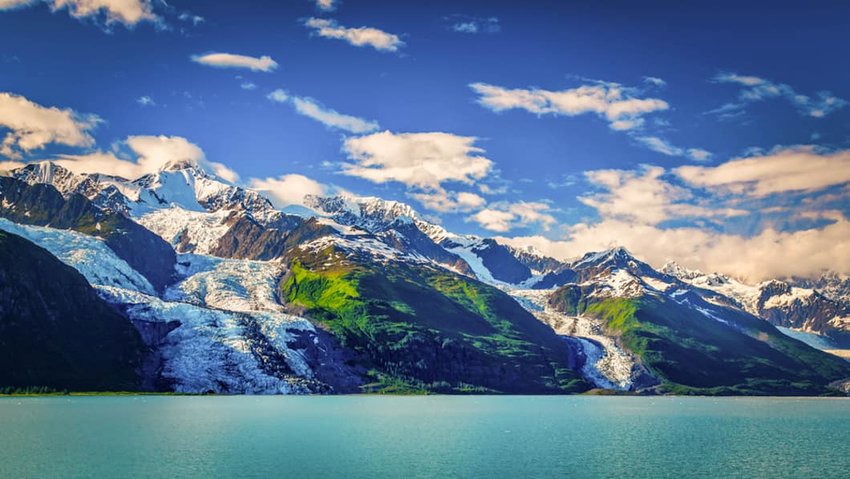
With so many pristine parks to choose from, you’d think Alaska would get tired of being so dang beautiful all the time. Glacier Bay National Park gives Alaskan adventurers another opportunity to immerse themselves in rugged, untamed mountains, temperate rainforests, sheltered fjords, and dynamic glaciers. Sounds like a real snooze-fest, right?
While 500,000 visitors reach Glacier Bay each year, most are merely stopping over as part of an Alaskan cruise. Glacier Bay can actually be a bit challenging to get to. If you aren’t aboard a big boat, there are only two ways to get to the park: on an air taxi or via the Alaska Marine Highway ferry.
There are only five developed trails near the Glacier Bay Lodge and Visitor Center, but you can also hike along unmarked areas of the shoreline. Or, if you’re itching for more of a challenge, there are 3 million acres of wild backcountry wilderness waiting to be explored. Not up for the effort? That’s ok. You can also kayak, go wildlife watching or take a guided tour of tidewater glaciers.
It goes without saying that there are no restaurants or stores within the park boundaries — after all, the park only has one tiny slice of roadway. However, you can find more accommodations and services in nearby Gustavus.
26. Crater Lake National Park
Oregon
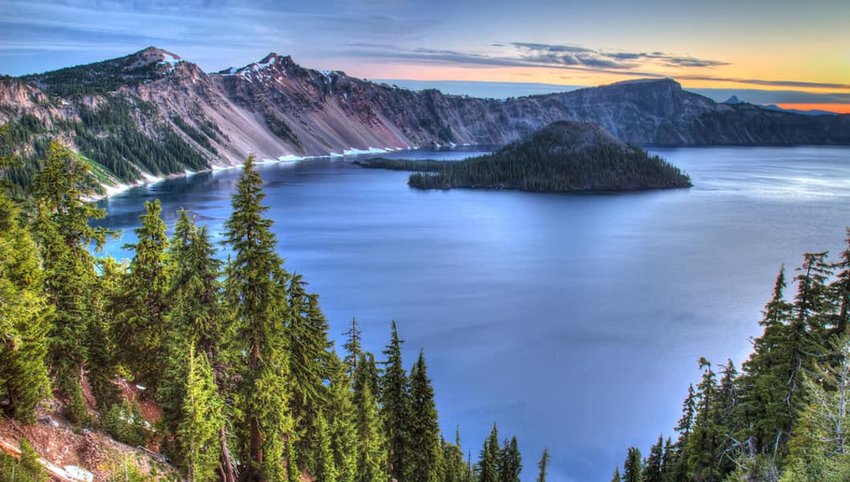
Crater Lake is more than just a big body of water. At 1,943-feet deep, it’s the deepest and most pristine lake in the United States. Oregon’s one and only national park also happens to sit in the belly of Mt. Mazama, a dormant volcano.
There is a lot to learn and love about the lake itself, but Crater Lake occupies less than ten percent of the 183,224-acre national park. So aside from gaping at magnificent volcanic landforms, like Wizard Island and Phantom Ship, you can explore 90 miles of hiking trails, take a dip at a designated swimming spot, go fishing or even stargazing. In the winter, you can also strap on your snowshoes. Crater Lake receives an average of 44 feet of snow each year and completely transforms into a winter playground.
Favorite trails, like the Discovery Point Trail, which skirts the caldera rim, is open all year long, but you might have to wait until it warms up to trek the Cleetwood Cove trail, a 1.1-mile trail that descends to the shoreline of the lake. The good news is that you probably won’t have to fight for a view. Although Crater Lake receives over 700,000 visitors a year, it doesn't feel crowded.
Overall, lodging is relatively limited and most people stay in Bend, just outside of the park. However, the Crater Lake Lodge and cabins at Mazama Village can be found inside of the park and are open seasonally. There are also two seasonal campsites, a few restaurants, and a tiny grocery store.
25. Canyonlands National Park
Utah
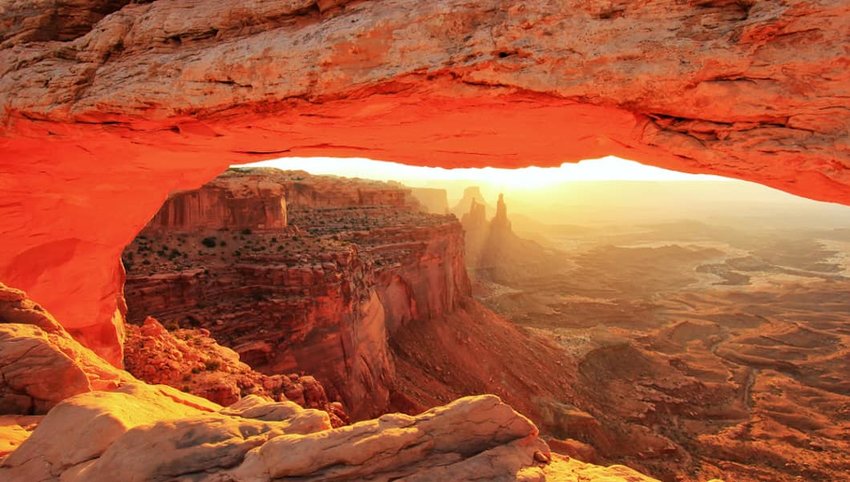
Arches' nearby neighbor, Canyonlands, is broken up into four “districts” by the massive canyons of the Green and Colorado Rivers, but a lack of development really only provides a couple of roads in and out of the park boundaries.
The Island of the Sky area is closest to the town of Moab, so it’s usually the first stop for visitors and a great place to get acclimated to the area. Along the main road, there are a handful of easy-to-moderate scenic trails to otherworldly needle formations and several scenic overlooks. At early hours, dozens of photographers wait patiently for sunlight to peek through the Mesa Arch, one of the park’s most iconic landmarks.
The Needles region of the park, which is quite a trek from Island of the Sky, is where avid adventurers seek out over 100 backcountry trails. Trails to incredible slot canyons, stunning red-rock formations, and ancient petroglyphs draw backcountry visitors to this area every year.
Where Canyonlands starts to lose some brownie points, is in amenities and accommodations. There is no lodging or dining in the park and only two campgrounds with a total of 31 campsites available. Although Canyonlands has a lot of love for backcountry campers, the average sightseer might have to travel the 30+ minutes to Moab to find a place to stay. Despite lack of lodging, Canyonlands gets over 700,000 visitors each year. Crowding is more evident in colder months, like April and May, and along easily accessible trails and at popular scenic overlooks, like Grand View Point.
24. Wrangell-St. Elias
Alaska
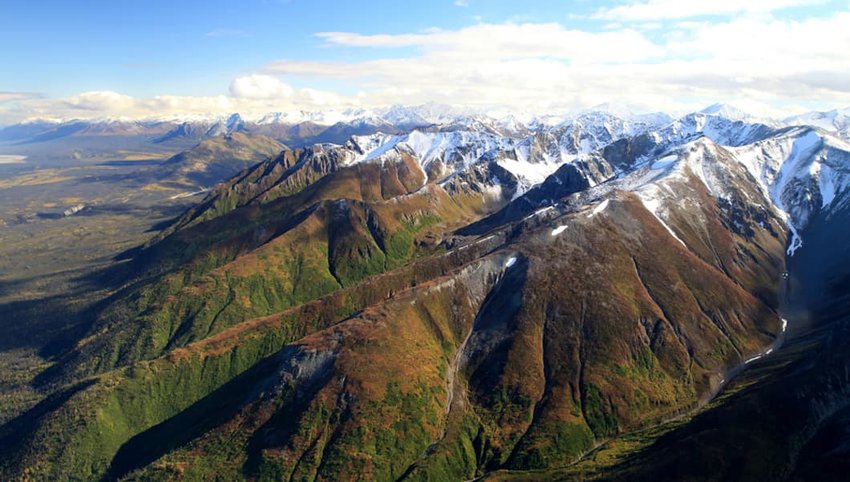
There aren't enough superlatives to describe the utter enormity of Wrangell-St Elias National Park. At an incredible 13.2-million acres, Wrangell St. Elias is said to be the same size as Yellowstone, Yosemite and Switzerland combined. (Yes, the entire country of Switzerland.)
But sheer size isn’t the park’s only impressive stat. Wrangell-St. Elias is home to four major mountain ranges, nine of the 16 tallest peaks in the states, one of the largest active volcanoes in North America, and 60% of the glaciers in the U.S.
So, wondering what to expect? Complete and utter isolation coupled with mind-blowing, monstrous alpine peaks and glaciers as far as the eye can see. There are only two semi-maintained dirt roads, Nabesna Road and the McCarthy Road, that provide access to the park. However, once you’re there, you can take a day-hike to several iconic glaciers, like Root Glacier or Kennicott Glacier, hit the backcountry, kayak along 150 miles of coastline, or put your mountaineering and climbing skills to the test.
The beauty of this colossal Alaskan park is that it’s remote, quiet, and wild. Few hiking trails are maintained, and services are limited. Even the National Park Service insists that travelers need to be “highly self-motivated and self-sufficient.”
23. Katmai National Park and Preserve
Alaska

According to the National Park Service, Katmai is “a landscape alive underneath our feet, filled with creatures that remind us what it is to be wild.” And one creature, in particular, is Katmai’s pride and joy – the brown bear.
It’s estimated that over 2,200 grizzlies live in Katmai National Park, and Brook’s Camp offers visitors the once-in-a-lifetime opportunity to get up close and personal with these powerful animals as they pluck sockeye salmon from the Brooks River. Viewing platforms were explicitly constructed to minimize the impact on the bears, but if you’d rather view wildlife beyond the boardwalk, you can also take a bear-viewing trip into the backcountry.
Katmai National Park preserves over four million acres of remote Alaskan wilderness. Home to the Valley of Ten Thousand Smokes, the site of the largest volcanic eruption of the 20th century, it goes without saying that Katmai is an epicenter for adventure.
Disconnected from the outside world, Katmai requires quite a bit of additional planning and effort to visit. The park can only be accessed by plane or boat and accommodations can be hard to come by, depending on the season. Nevertheless, this park should definitely be on your list if you’re looking to truly disconnect.
22. Lassen Volcanic National Park
California
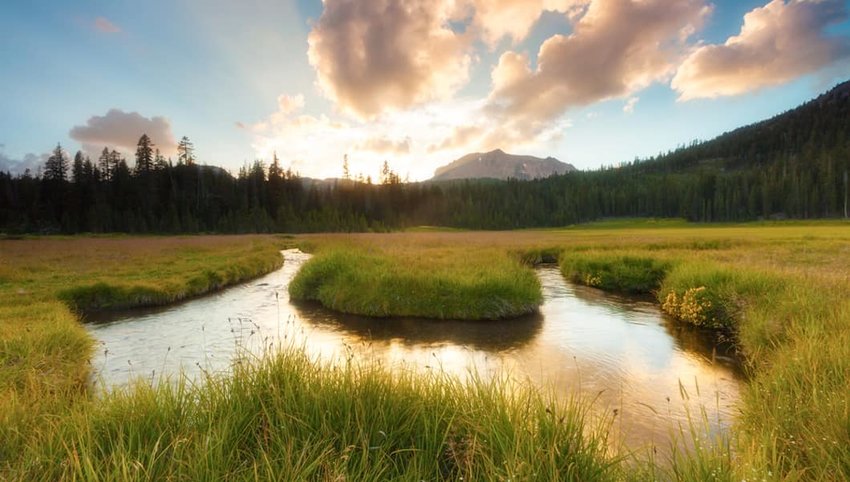
Sure, you could always chase waterfalls, but how about chasing some volcanoes? Within Lassen Volcanic National Park, you’ll find not one, but four different types of volcanoes: shield, plug dome, cinder cone and composite.
This 106,000-acre park ranges in elevations from 5,300 feet to over 10,000 feet at the top of Lassen Peak. This unlocks a ton of potential when it comes to exploring both incredible hydrothermal features, as well as snow-capped peaks, tumbling waterfalls and serene meadows.
The northwest corner of the park is popular for swimming, kayaking, hiking, and fishing around Manzanita Lake, which offers striking views of Lassen Peak. However, the mountainous southwest region is where you’ll find the remnants of Mt. Tehama, an old 11,500-foot volcano that used to dominate the landscape, as well as hydrothermal features like Bumpass Hell and Sulphur Works. The park also offers over 150 miles of hiking trails, so no matter which part of the park you choose or your hiking ability, there’s a footpath for you.
Half a million visitors explore Lassen Volcanic each year, but there is a lodge, several rustic cabins, and 430 campsites to house you during summer months. If you can’t quite snag a spot in time, nearby Mineral, Chester, Red Bluff, and Redding can be the perfect basecamp for your adventure.
21. Kenai Fjords National Park
Alaska
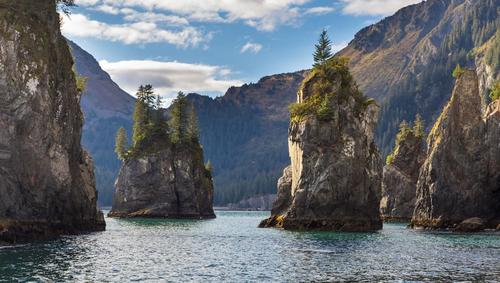
Take a trip back in time to the last Ice Age by visiting Kenai Fjords National Park. Within this 670,000-acre park lies the 700 square mile remnants of a massive glacier that once covered most of Alaska — Harding Icefield.
The best way to get a true sense of how this incredible glacier carved out the landscape is by taking a flightseeing tour over the icefield. Along the trip you’ll peer down at isolated mountain peaks and marvel at the park’s many glaciers and fjords. If you’d rather work a little harder for the view, you can also hike the Harding Icefield Trail, an 8.2-mile round trip trek that takes you through cottonwood and alder forest, through vast meadows, and above the tree line where you can appreciate the icefield in all of its glory.
Although the Harding Icefield is considered the crown-jewel of the park, you can also take a guided kayaking tour of the fjords, fish in the rich waters of Resurrection Bay, or take a boat tour to get a closer look at marine mammals and the tidewater glaciers. There are a few seasonal accommodations within the park, including two public cabins and a campground. However, the city of Seward is nearby and offers a lot more in the way of lodging and amenities.
20. Redwood National and State Parks
California
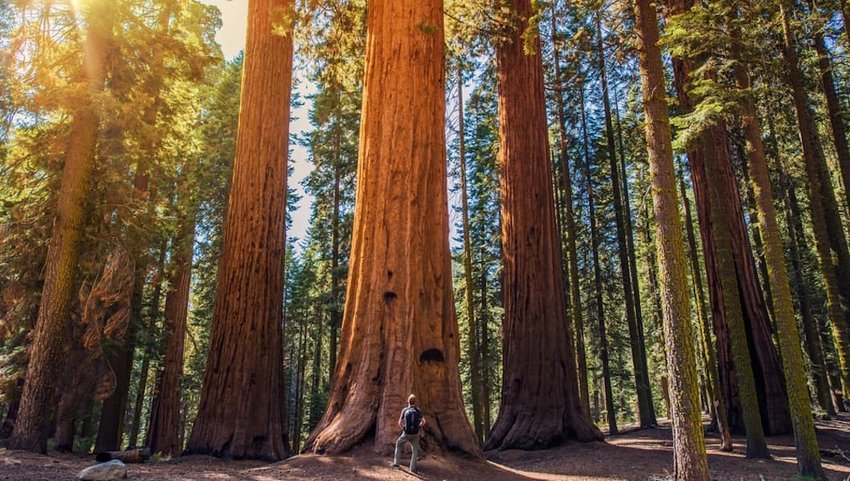
John Steinbeck once penned: “Once seen, [Redwoods] leave a mark or create a vision that stays with you always.” The same can be said about Redwood National and State Parks, the carefully-preserved protector of the tallest trees on Earth. In fact, this small patch of coastal redwoods is the last of a forest that once covered over two million acres.
This 130,000-acre park is actually a group of both federally and state protected forests, beaches, and grasslands along the coast of Northern California. But unless you have a map in hand, it’ll be hard to tell where one park ends and the next begins. Not that that matters — they’re all worth visiting.
Spending time amongst the Redwoods means strolling through vast stretches of old growth forests, driving along some of the best scenic highways on the West Coast, and enjoying over 40 miles of rugged, preserved coastline. The park also protects vast prairies, rivers and oak woodlands.
If you’re looking to connect with nature off the beaten path, there are nearly 200 miles of backcountry trails and seven designated campsites strewn throughout the park. There are also eight campground cabins and four developed campgrounds within the park. For food and other amenities, however, you’ll need to venture to one of several nearby cities.
19. Bryce Canyon National Park
Utah
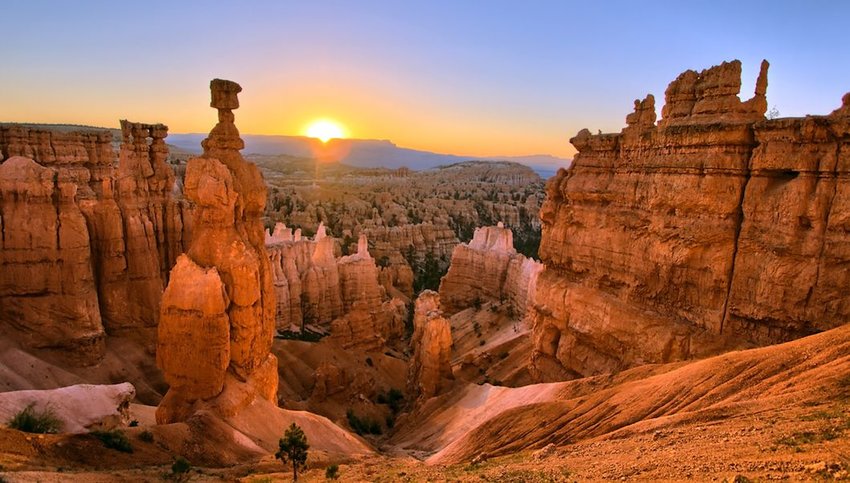
Home of the hoodoos, Bryce Canyon is much more than a single sandstone canyon. Here, you’ll find the largest concentration of eroded auburn spires, or hoodoos, on Earth. Over 2.5 million visitors a year spend time marveling at the striking geological rock formations, and natural amphitheaters carved out of the plateau below.
Although on paper it appears that there are only a few day-hiking trails to choose from, several intermediate and strenuous trails can be combined to add to the adventure. The 1.3-mile Navajo Trail, for example, which begins at Sunset Point, can be paired with the 5.5-mile Peek-a-boo trail, that travels through the heart of Bryce Amphitheater. Bryce Canyon only encompasses about 35,000 acres, which is relatively humble in comparison to other parks with similar amenities. There are 12 backcountry campsites, two front country campsites and lodging available inside of the park.
But the beauty of Bryce is that you don’t have to put on your boots to enjoy the views. Several popular viewpoints, like Bryce Point, Inspiration Point, Sunset Point, and Sunrise Point are highlights of an 18-mile road that travels along the canyon rim. And what might surprise people the most about Bryce is that despite being in the middle of the Utah desert, it’s also a great spot for winter recreation like snowshoeing and cross-country skiing.
18. Arches National Park
Utah
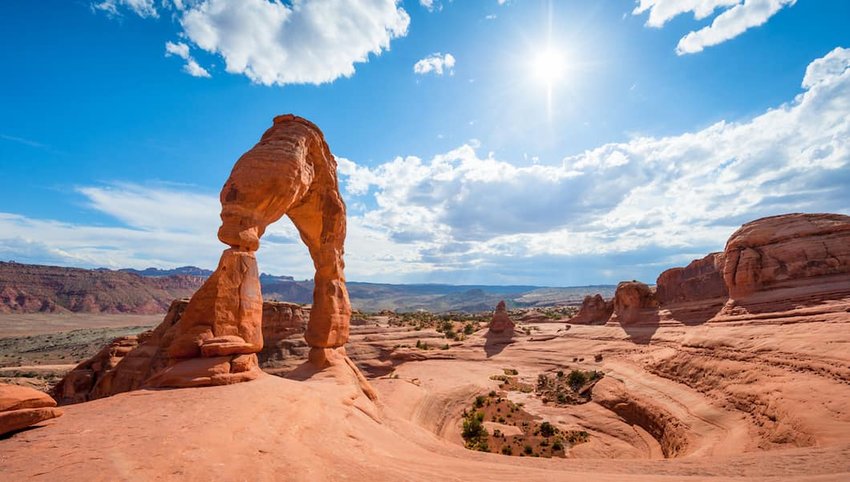
Just 5 miles north of Moab lies the world’s largest concentration of natural sandstone arches — over 2,000 of them to be exact.
Arches National Park icons, like Delicate Arch, Double Arch, Tower Arch, and Landscape Arch (which also happens to be the most massive arch on the planet), draw the most visitors. However, there are plenty of soaring sandstone pinnacles and spires to appreciate along the roadway.
Although the 76,519-acres of protected high desert terrain are entirely devoid of lodges and restaurants, accommodations are just five miles from the park entrance. If you’re hoping to camp out beneath the stars, however, you’ll want to plan ahead – the park’s only campground, Devil’s Garden, fills up fast.
Whether it be for hiking, biking, canyoneering, rock climbing, or general sightseeing, over 1.5 million people appreciate Arches each year. The relatively modest climate keeps the park running year-round. So, you might find it hard to get some alone time with these sandstone monoliths.
16./17. Sequoia & Kings Canyon National Parks
California
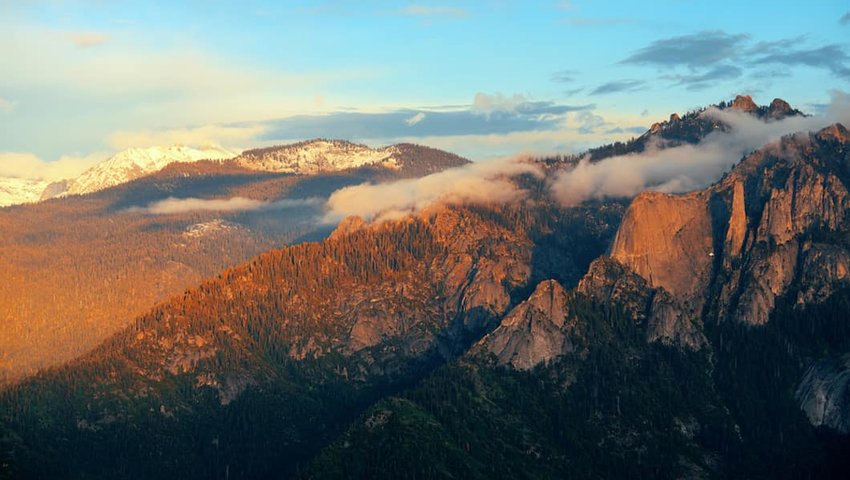
Everyone loves a two-for-one, especially when it comes to national parks. As Yosemite’s southern neighbors, Sequoia and Kings Canyon National Parks are often overlooked. But as the famed naturalist John Muir once penned, “…southward of the famous Yosemite Valley, there is a grander valley of the same kind.” And we have to agree.
Aside from being home to the world’s largest tree (by volume) and protecting vast areas of towering inland redwoods, a big part of Sequoia’s appeal is that it isn’t all that crowded. Take a stroll under the big trees in the Giant Forest, view wildlife in Crescent Meadows, climb to the top of Moro Rock, or, if you’re feeling extra-ambitious, break away from the crowds and hike the 60-mile High Sierra Trail to the top of the highest peak in the lower 48 — Mount Whitney.
Despite being two individual parks, you’ll find that Sequoia and Kings Canyon are often combined together in terms of accommodations, attractions and things to do — even by the National Park Service. In fact, you might not notice when you leave one park and enter the next. However, each park has its own unique history and protects vital resources within their borders. In fact, Kings Canyon protects one of the deepest canyons in North America, Kings River Canyon.
If you add Sequoia to your bucket list, you’ll probably stumble into Kings Canyon at one point or another, so it only makes sense to add a few Kings Canyon gems to your must-see list. Zumwalt Meadow, Grizzly Fall, and Knapp Cabin are popular attractions in the park, but you can also drive along Kings Canyon Scenic Byway to marvel at the incredible canyon walls from several scenic overlooks.
15. Grand Canyon National Park
Arizona
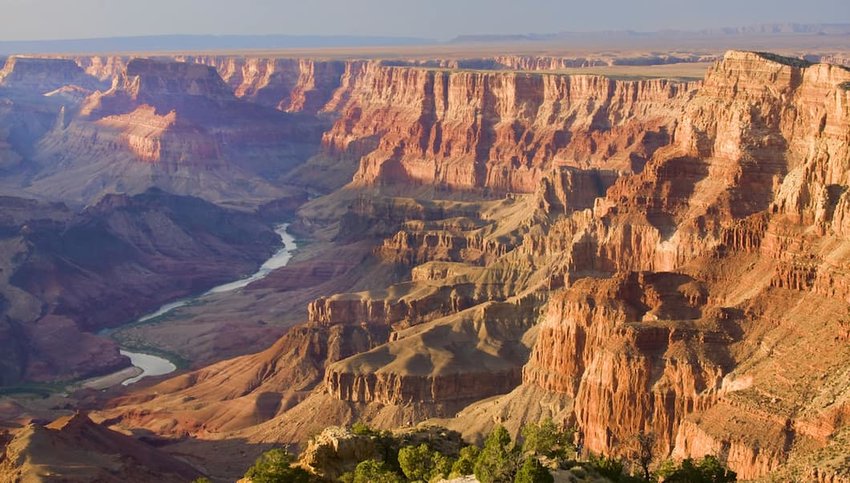
At 6,000-feet deep, the Grand Canyon is cut so deep in the Earth’s crust, it can be seen from space. The Grand Canyon is one of the 7 wonders of the World and a classic American road trip destination. It's really a grand slam of a national park by all standards.
Generally, the park consists of two sides, North Rim and South Rim. The South Rim is open year-round, while the North Rim, which sits at a higher elevation, is only open during the summer. The canyon itself is 277 miles long and 18 miles wide, so traveling from rim to rim takes approximately five hours. Over six million people visit each year to snap selfies from the Grand Canyon Skywalk, catch a sunset from iconic viewpoints, cruise around on rented bikes, and appreciate the wonder from sections of the South Kaibab trail or Rim Trail.
There are plenty of lodges and campgrounds, restaurants, and shops between the two rims, but the park’s incredible popularity makes it nearly impossible to make last-minute plans if you’re traveling during peak season. To avoid crowds, we recommend traveling during the spring, fall or winter. If you visit during the summer, consider checking out the North Rim, which receives only 10% of the visitors, but offers equally as spectacular views.
14. Shenandoah National Park
Virginia
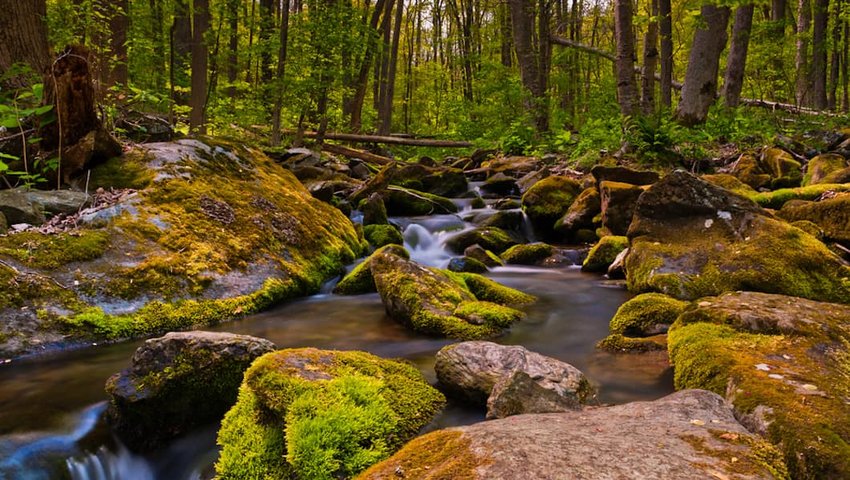
Just a quick trip from the nation’s capital lies 196,000 acres of historic mountain landscape. Shenandoah National Park is where most D.C. locals go for fall photo ops and a breath of fresh air.
Enjoy breathtaking vistas of the Blue Mountains from 75 overlooks along the 105-mile scenic Skyline Drive, go fishing in one of 70 pristine mountain streams, or take your pick of over 500 miles of hiking trails, including 101 miles of the Appalachian Trail. Park highlights include Rapidan Camp, President Hoover’s summer White House, Hawksbill Mountain (the highest point in the park), and Dark Hollow Falls, a popular walk to a 70-foot waterfall.
You shouldn’t have to worry about finding a place to eat, sleep, or hang. To accommodate 1.5 million annual visitors, there are two lodges, Skyland and Big Meadows, furnished cabins, and four developed campgrounds as well as several restaurants.
13. Death Valley National Park
California
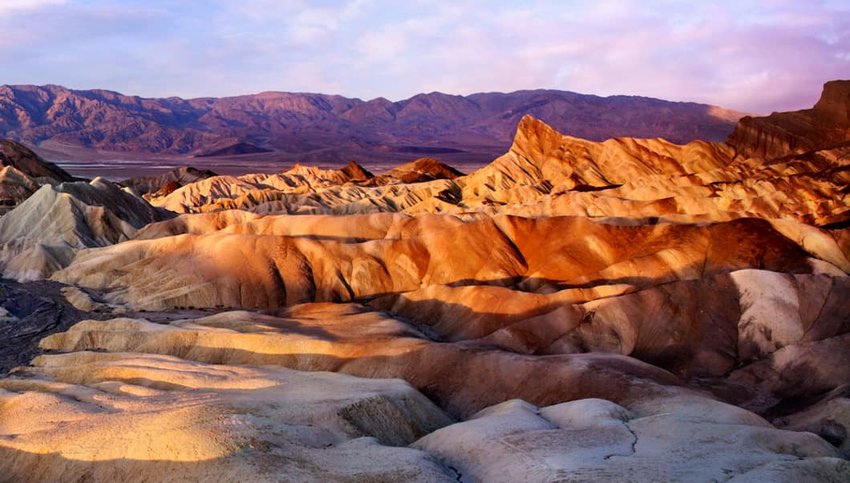
Badwater Basin, Funeral Mountain, Devil’s Golf Course – noticing a theme? We can’t help but think that someone had a lot of fun giving Death Valley icons menacing names. Still, you shouldn’t let the park’s forbidding names deter you – the area is perfectly safe.
Marvel at painted hills, hike one of 21 accessible trails, take a stroll at 300 feet below sea level or hike Telescope peak, an 11,000-foot giant; Death Valley is so much more than just dreary desert terrain. As an International Dark Sky Park, Death Valley offers some of the darkest skies and best stargazing in the states, so if you’re looking to avoid the park’s record-breaking heat in the summer, make sure you head outside after dark.
There are four lodges, nine campgrounds, and five different restaurants to accommodate the 1.6 million visitors that flock to the park each year. But with vast expanses of road separating major attractions or trails, and 3.3 million acres of desert to explore, chances are you won’t feel crowded or claustrophobic in the park.
It’s worth noting, that despite offering plenty of places to stay, eat, and play, you’ll have to be comfortable spending some time in the car. It takes several hours to get from one part of the park to the other. Not to mention, a good portion of Death Valley’s 1,000 miles of roads are unpaved or require 4x4, so you can’t exactly plug a destination into your GPS and go.
12. Acadia National Park
Maine
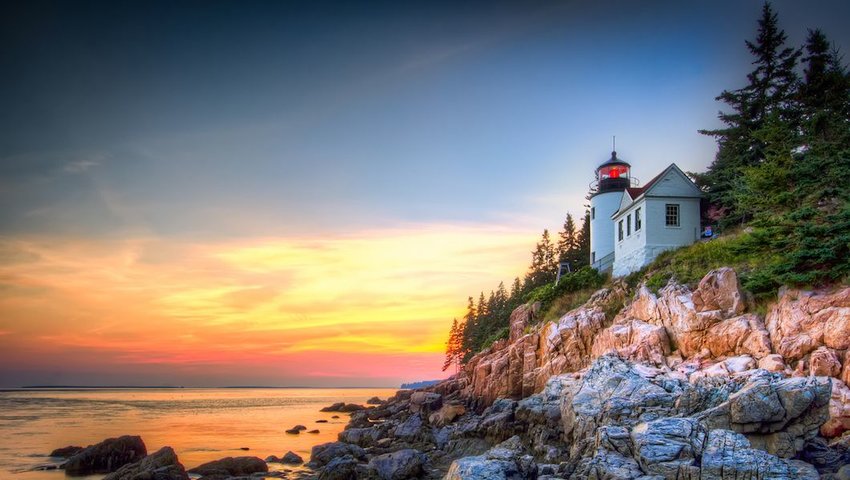
Just a hop, skip, and a jump from Boston, Acadia National Park, aptly-nicknamed the crown jewel of the North Atlantic Coast, protects more than 47,000 acres of rocky headlands along the coast of Maine.
While you won’t find towering alpine peaks in Acadia, you’ll experience what east coast leaf-peepers consider to be the best, most vibrant fall foliage in the region. And despite its nominal acreage relative to other parks on this list, Acadia offers some of the very best hiking trails on the East Coast.
Acadia’s ecosystem simply can’t handle the impacts of backcountry camping, and from afar it might appear that the park is anti-accommodations or amenities. However, nearby Bar Harbor is happy to offer a place to fill your belly and rest your head.
The biggest drawback to a trip to Acadia is the park’s popularity. Over 3.5 million people visit the park annually, so road congestion and crowding are a common theme during peak season — June to September. In fact, in 2017, the NPS closed the road to Cadillac Mountain summit, the park's most popular attraction, 49 times. So, don’t forget to pack your patience and consider reading helpful hacks for escaping the crowds.
Nevertheless, Acadia offers the chance to trek to the top of the tallest peak in the North Atlantic, Cadillac Mountain, dip your toes in the sand at Sand Beach, eat popovers and sip tea at the Jordan Pond House, and of course, delivers a healthy dose of autumn vibes – all in a single day.
11. Denali National Park
Alaska
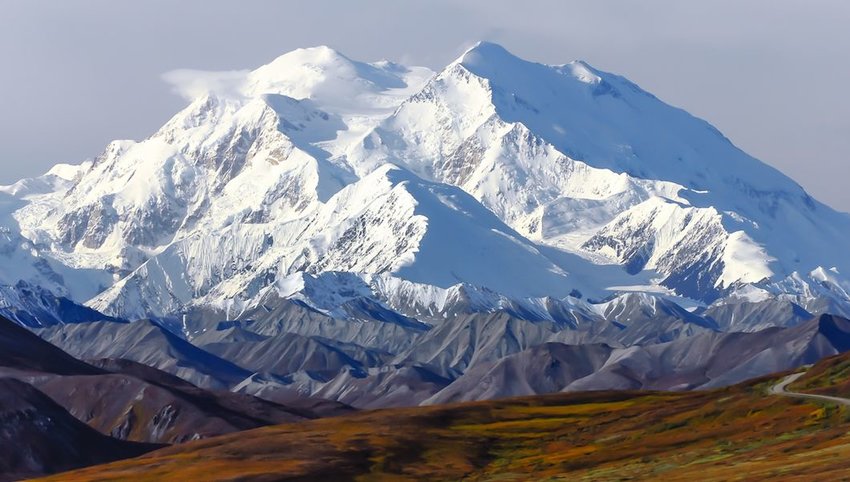
A trip to Alaska wouldn’t be complete without experiencing the untamed Alaskan tundra, a slice of North America that genuinely symbolizes what it means to be wild. Denali, Alaska’s most visited national park, is 6 million acres in size with 2.1 million acres of designated wilderness. A wild frontier, Denali has just a single 92-mile road that dissects the landscape.
Visitors will have the opportunity to witness Alaska’s “big five” — moose, bears, wolves, Dall sheep and caribou — in their natural habitat. You can also take a dog sledding tour, hit the slopes, take a scenic flight over classic Alaskan peaks, or hike along 35 miles of developed trails.
Oh, and then there’s the park’s namesake mountain, Denali, which happens to be the tallest peak in North America and towers over the landscape at 20,320-feet above sea level. There are also six campgrounds and several privately-owned lodges, like Camp Denali and North Face Lodge, that provide seasonal accommodations.
The reality is, if it weren’t for the fact that Denali is relatively difficult to access and safely explore, it would probably land somewhere at the top of the list. But this uninhabited, pristine wilderness tends to deter travelers that are intimidated by relative isolation and the intimacy of the landscape. Nevertheless, places like Denali are meant to keep our wildest places wild and allow for people to strap on their boots, grab their pack and discover untouched landscapes.
10. Rocky Mountain National Park
Colorado

It’s no secret that Colorado is chock-full of 14,000-ft peaks – 53 of them to be exact. So it’s no wonder that very few mountain ranges are as well-known as the Colorado Rockies. And, as you probably guessed by now, Rocky Mountain National Park’s crown-jewel is, in fact, the Rocky Mountains.
Within park boundaries, you’ll find the “highway to the sky,” Trail Ridge Road, which covers 48 miles of epic alpine scenery before reaching an incredible 12,183 feet in elevation. This is the highest continuously-paved road in America, and there aren’t any guardrails to keep you from appreciating the views.
Aside from scenic drives, Rocky Mountain also offers 335 miles of hiking trails. Popular treks, like the one to Dream Lake, feature iconic Rocky Mountain summits like Glacier Gorge, Longs Peak, and Hallett Peak, reflecting in pristine subalpine lakes. Trails that begin along Trail Ridge Road, like the hike to Mt. Ida, offer what many consider to be some of the best views of the Rockies in the state.
Over 4 million people wine, dine, relax, explore and adore Rocky Mountain National Park every year and heavy crowding can sometimes make it feel like these picturesque peaks come at a cost. However, with Estes Park and Grand Lake nearby, you can always stop to grab a bite to eat, kick up your feet, and wait for the crowds to die down.
9. Grand Teton National Park
Wyoming

Grand Teton National Park might live in the shadow of nearby Yellowstone. But Teton lacks in geothermal features, it makes up for in 310,000 acres of lush mountain meadows, alpine lakes, and grand glaciated peaks. Besides, we would argue that Grand Teton is every bit as scenic as Yellowstone and a lot less crowded.
There are seven campgrounds and eight lodging locations available during the summer season. There is also a public bus that will take you from nearby Jackson Hole to several popular spots in the park.
Generally speaking, to truly appreciate the breathtaking big mountain scenery, a little extra effort is required. Only a few trails exist for novice hikers, and most of the popular footpaths, like Cascade Canyon and Teton Crest, are long-distance trails that ascend high-elevation passes and rocky terrain. Even the more modest trails, like 7.6-mile Jenny Lake Loop, can take several hours to complete.
If you don’t have the chance to hike through the park, Teton Park Road is the next best option. Winding through the base of the Teton Range, this picturesque road offers incredible views of the Teton range from iconic overlooks like Snake River Overlook and links up with other worthwhile drives, like Signal Mountain.
8. North Cascades National Park
Washington
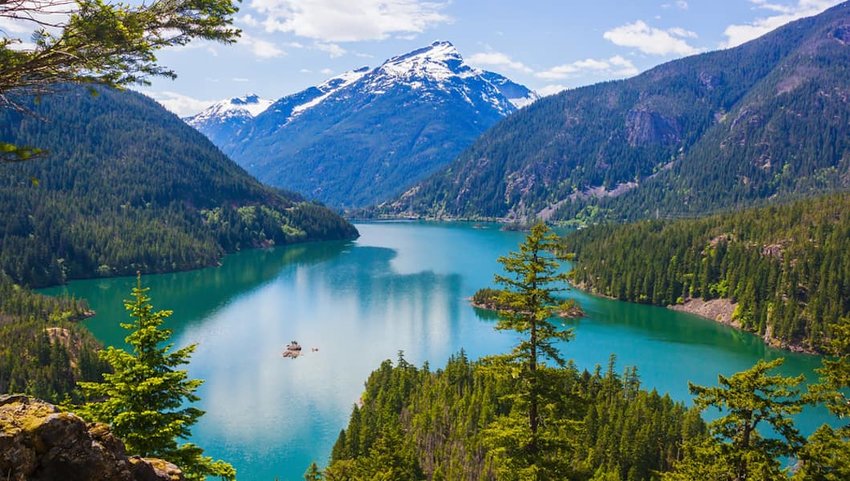
Welcome to North Cascades — home to dazzling, turquoise alpine lakes, iconic craggy Cascade Mountains, dramatic ridgelines and waterfalls … so many waterfalls.
North Cascades National Park is one of the most underrated destinations on the West Coast. Only a little over 30,000 people visited the park last year, a remarkably low number considering the wow-factor that is literally seeping through the mossy rocks on the side of its roadways.
Despite Rainier and Olympic getting most of the love, locals would agree that North Cascades is the park you visit in the Evergreen State if you’re looking for world-class hiking. There are over 400 miles of hiking trails that range from epic backcountry, glacier-laden treks like the Cascade Pass Trail and Maple Pass Loop, to simple footpaths to scenic overlooks like Diablo Lake. And, if you haven’t had your fill of scenic, snow-capped peaks, Mt. Baker-Snoqualmie National Forest is just around the corner
North Cascades has a full range of camping options ranging from campsites accessible by car to those requiring a trek into the backcountry. There are also several restaurants and lodges available if you don’t feel like roughing it.
7. Zion National Park
Utah

Utah’s pride and joy, Zion National Park, preserves over 140,000 acres of epic red rock landscape. And when we say epic, we mean 2,000-ft sheer vertical sandstone cliffs adjoined by a labyrinth of naturally-carved and brilliantly-colored canyons.
To offset Zion’s 4.5 million annual visitors, the park has been outfitted with an impressive infrastructure, which includes a variety of eco-friendly services. One of those services, a free shuttle, helps to safeguard the park’s natural beauty by keeping fewer cars on the road.
A trip to Zion wouldn’t be complete without reaching one of the most iconic views in the park, Angels Landing. Sitting at nearly 1,500 feet above the Virgin River, a trek to the top requires tackling 2.2-miles of merciless switchbacks and clinging to chains over exposed edges and slippery surfaces. After you’ve reached one of the highest points in the park, you can cool off by wading through waist-deep water through the Narrows, the slimmest section of Zion Canyon.
Zion has three campgrounds and a lodge, but they fill up fast. Fortunately, Springdale, Rockville, Mt. Carmel, Hurricane, and St. George all offer easy access to the park and plenty of food and lodging.
6. Great Smoky Mountains National Park
Tennessee and North Carolina

Most people assume that the flagship Western parks, like Yellowstone, Yosemite, and the Grand Canyon, attract the most crowds. But, it’s actually the Great Smoky Mountains that tops the charts as the most-visited national park. Why do so many people love these mountains? Well, there isn't one single thing that makes this 522,419-acre stretch of wilderness magnificent — there are dozens.
For starters, the park is near several small towns and major cities, like Knoxville, which makes it incredibly accessible. Getting there is half the fun – the park itself has over 800 miles of hiking trails, 2,900 miles of fishable streams, several geological wonders, cascading waterfalls, ample wildlife, contains 70 miles of the world-famous Appalachian Trail. Not to mention, the park can be experienced by just about every mode of transportation imaginable, including a horse-drawn carriage. Just about the only thing the Great Smoky Mountains park is lacking is a peak over 10,000 feet — though the admired Clingman’s Dome seems to keep visitors satisfied.
In the fall, the park puts on an unfathomable display, and the hillsides are painted in vibrant shades of red, yellow, and orange. And if that’s not enough, the nation’s most treasured park offers free admission. That’s right — you can just drive right in.The only major drawback to a visit to the Great Smoky Mountains, is, of course, the crowds. Lots and lots of crowds. Unless, of course you’re hopping on a backcountry trail, this isn’t really the park you visit to escape into solitude.
5. Yellowstone National Park
Wyoming/Montana
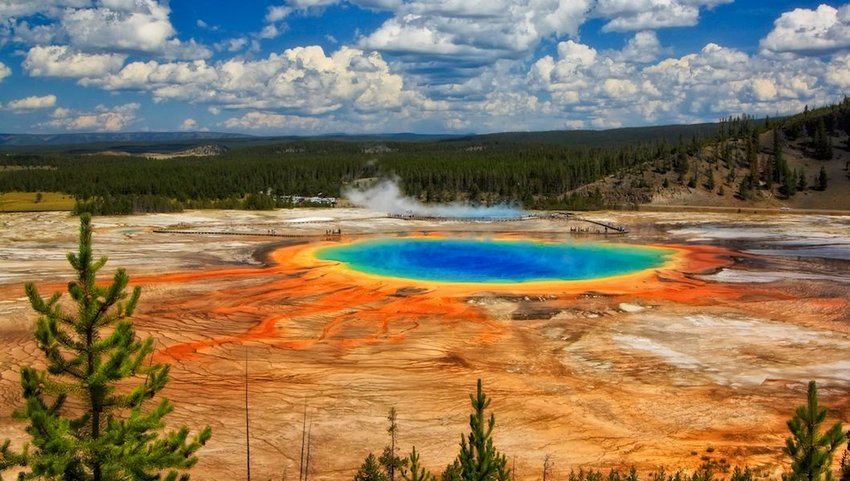
Yellowstone is usually referred to as the nation’s first official national park, but some might argue that it’s also the country’s most beloved stratovolcano. Although most people know Yellowstone for its large concentration of theatrical geysers and vibrant thermal features, the park has a lot more to offer.
Yellowstone National Park can be divided into several distinct regions and habitats. Sure, there are the geysers, fumaroles and wild geothermal features. But Yellowstone is also home to hundreds of species of wildlife and has its very own 26-mile-long, 800+ ft deep Grand Canyon. The vastness and variety in the park could probably keep you entertained for the rest of your life.
You can make the short trek along the Grand Canyon of Yellowstone to enjoy the painted cliffs, spend a day watching wildlife roam along Lamar Valley, or take a stroll around the kaleidoscopic Grand Prismatic Spring. Of course, no visit to Yellowstone would be complete without a quick visit to Old Faithful, the iconic and highly predictable geyser.
Despite millions of people visiting the park each year, a tiny number venture beyond the park’s most accessible attractions. So if you want to see a side of Yellowstone that few people ever do, grab a park map, strap on your boots, and head out on one of the park’s 900 trails.
You definitely won’t go hungry in Yellowstone National Park. The park has nine lodges, twelve campgrounds, and several different stores and restaurants. Just keep in mind, wildlife doesn't obey the rules of the road, and with the park's popularity, it's not uncommon for traffic jams or "bear jams" to bring major roadways to a screeching halt.
4. Mount Rainier National Park
Washington
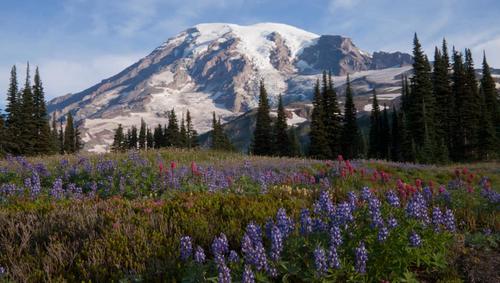
On a clear day, Mount Rainier’s glaciated peak can be seen rising dramatically from the landscape to 14,410 feet above sea level from over 200 miles away. And while the highlight of visiting Mount Rainier National Park is the mountain itself, there is a lot more to this magical landscape than an impressive (and active) stratovolcano.
Topping the list of every northwest backpacker’s bucket list is the Wonderland Trail, a 93-mile footpath that negotiates lowland forest, deep valleys, and subalpine scenery, all while encircling the volcanic masterpiece that is Mount Rainier. While the Wonderland Trail might be something to strive toward, novice and intermediate hikers tend to stick to shorter, but equally-dazzling trails that start from the Paradise Jackson Visitor Center, where there are over 260 miles of maintained trails to choose from.
The park spans over 200,000 acres, so whether you’d rather chase waterfalls, traipse through the woods or climb one of the most dangerous volcanoes in the world, you’ll never run out of things to see or do in Mount Rainier.
Rainier sees nearly 1.5 million visitors each year, a figure that is steadily climbing. Its popularly is partly due to its proximity to Seattle, relative accessibility and accommodations. So, if you want to see the park crowd-free, you’ll need to consider traveling during the off-season. Just don’t be surprised if the mountain doesn’t make an appearance — unpredictable northwest weather can mean that Mount Rainier might disappear behind a curtain of clouds at any moment.
3. Olympic National Park
Washington
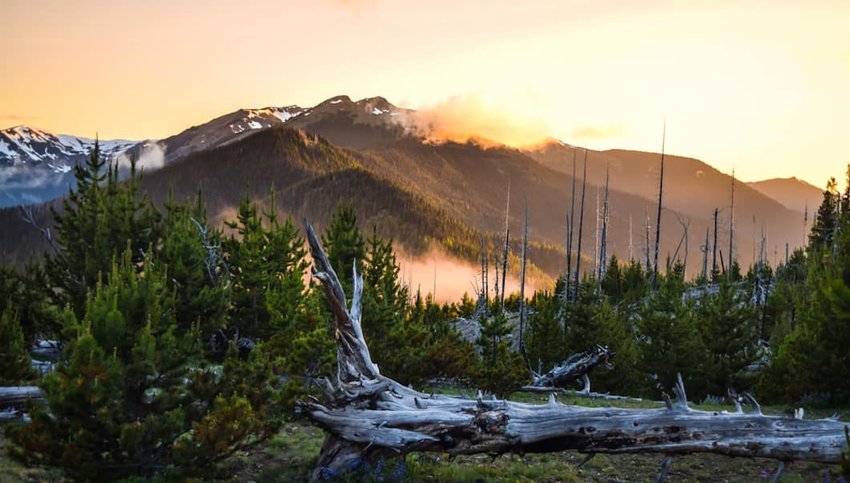
Do you prefer snow-capped peaks, old-growth forest, rugged coastline, or temperate rainforest? The beauty of the Olympic Peninsula is that you don’t have to choose one over the other – you can experience them all in one place.
You can start your Olympic adventure high up on Hurricane Ridge, to take in the sweeping views of Puget Sound and the incredible Olympic Range, or traverse trails to subalpine lakes and valleys. Or, you can head to Kalaloch or Ruby beach, where tall sea stacks and sandy beaches make for the perfect setting to snap photos and watch the sunset. Meanwhile, on the western side of the range, vast expanses of old-growth temperate rainforest, like Hoh and Quinault, dominate the landscape, offering treks to waterfalls and the perfect retreat from the summer sun.
With over 920,000 acres to discover and over 600 miles of trail to traverse, you’ll probably need a lot more than a one-day itinerary to explore this park. Fortunately, there are several lodges, campgrounds, and nearby towns to stock up on supplies and rest for a few nights.
2. Glacier National Park
Montana
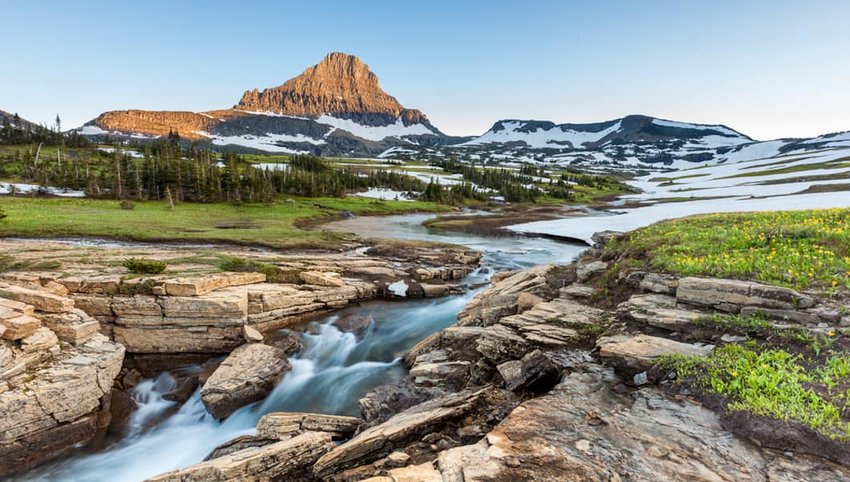
Some call it the “Crown of the Continent,” while others insist that it’s “The Backbone of the World.” There just aren’t enough superlatives to capture this pristine landscape.
Glacier National Park encompasses 1 million acres of Montana wilderness, two rugged mountain ranges, more than 130 lakes and 700 miles of trail. You can kick off your adventure on foot by hiking famous Glacier footpaths like Grinnell Glacier or the Highline Trail, or kick back and relax on the Flathead River.
Glacier also happens to be one of the best places in the world to experience by car. The iconic Going-to-the-Sun Road stretches for 50 miles through the park, crossing the Continental Divide before reaching over 6,600-feet at Logan Pass. Let’s just say, scenic is an understatement.
Glacier shares a border with Waterton Lakes National Park in Canada and is part of the world’s first International Peace Park. So, if you haven’t had your fix of Rocky Mountain paradise in Montana, you can always trek north of the border to an area known as “Goat Haunt.”
With the amount of sheer beauty, sightseeing, activities, amenities, and facilities, it’s not surprising that Glacier is one of the most popular parks in the country. It’s worth noting that heavy crowds might put a bit of a damper on your plans to find peace and quiet in the woods and it’s not uncommon for popular trails to be closed due to weather or wildlife.
1.Yosemite National Park
California

Sure, Yellowstone is the nation’s first official national park. But it was Yosemite that actually set a precedent for the creation of all national parks. In fact, before Yellowstone received national park designation in 1872, good ol’ Abe Lincoln signed the Yosemite Grant Act, which was the first time the federal government set aside parkland for preservation and public use.
It’s not unusual to see Yosemite at the top of a “best of” list — it’s almost impossible to place it anywhere else. Few other places in the world have inspired generations of environmentalists, poets, artists, hikers, climbers, and general outdoor enthusiasts the way that Yosemite has.
Yosemite also checks just about every box when it comes to accessibility, accommodations, activities, and grandeur. Large, sweeping meadows briefly part to expose incredible granite monoliths and cliffs, a rushing river, and roaring waterfalls. Yosemite Valley, the most famous stretch of road in the park, will leave you awestruck before you even get out of the car.
World-class climbing routes attract climbers from around the world. Scenic vistas and overlooks, like Tunnel View and Glacier Point, provide postcard-worthy snapshots of park icons like Half Dome, El Capitan, Yosemite Falls, Bridalveil Fall, and Three brothers — all before you so much as step foot on any of the park’s 800-miles of trail.
But with nearly 750,000 acres of wilderness and an infinite amount of backcountry potential, Yosemite has the ability to unlock the spirit of adventure in just about anyone that travels to the park. And if you're overwhelmed by the sheer amount to see and do, we put together a guide to help you out.
Unfortunately, Yosemite isn't exactly a hidden gem. Over 4 million people visit the park each year, most of whom spend their time in the 7.5-mile valley. Escaping the crowds can be difficult, especially during the summer. But just remember, the further you trek, the thinner the crowds.
Conclusion
We'll say it louder for the people in the back — every national park is worth visiting! So don’t be disheartened if your favorite park didn’t make it to the top of the list.
The national park experience is highly subjective. While some parks would probably rank higher for scenery, their wow-factor may have been diluted by excessive crowds, inaccessibility or lack of resources and accommodations.
When picking your next national park adventure, we recommend that you consider what you love to do, hope to see, and what’s most important to you. If you can’t find a nearby national park to explore, don’t fret — more than likely there’s an awesome state park right in your backyard!

